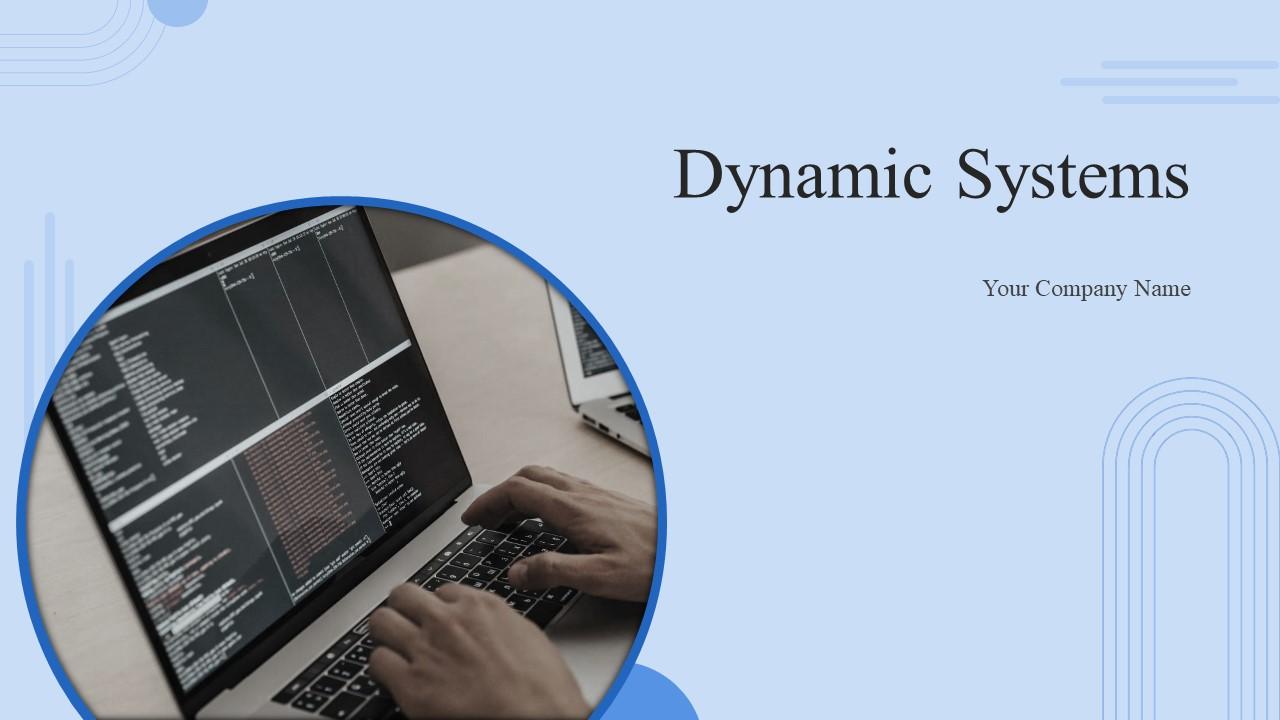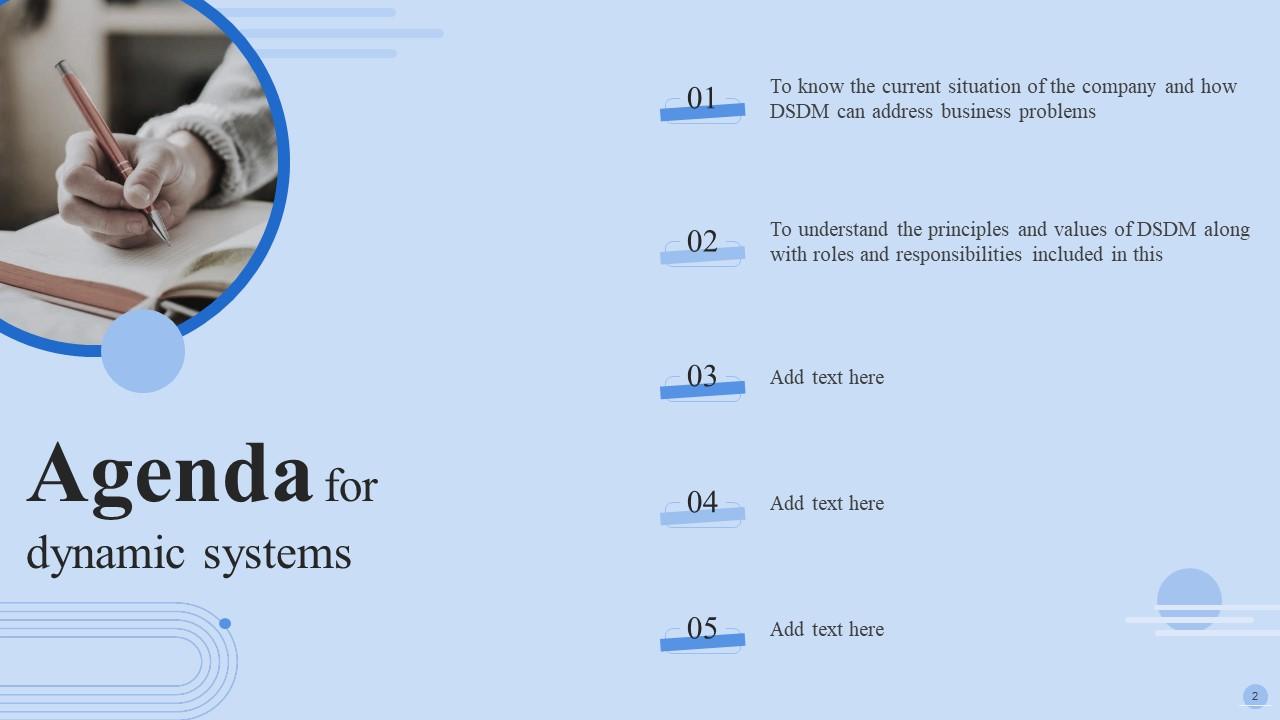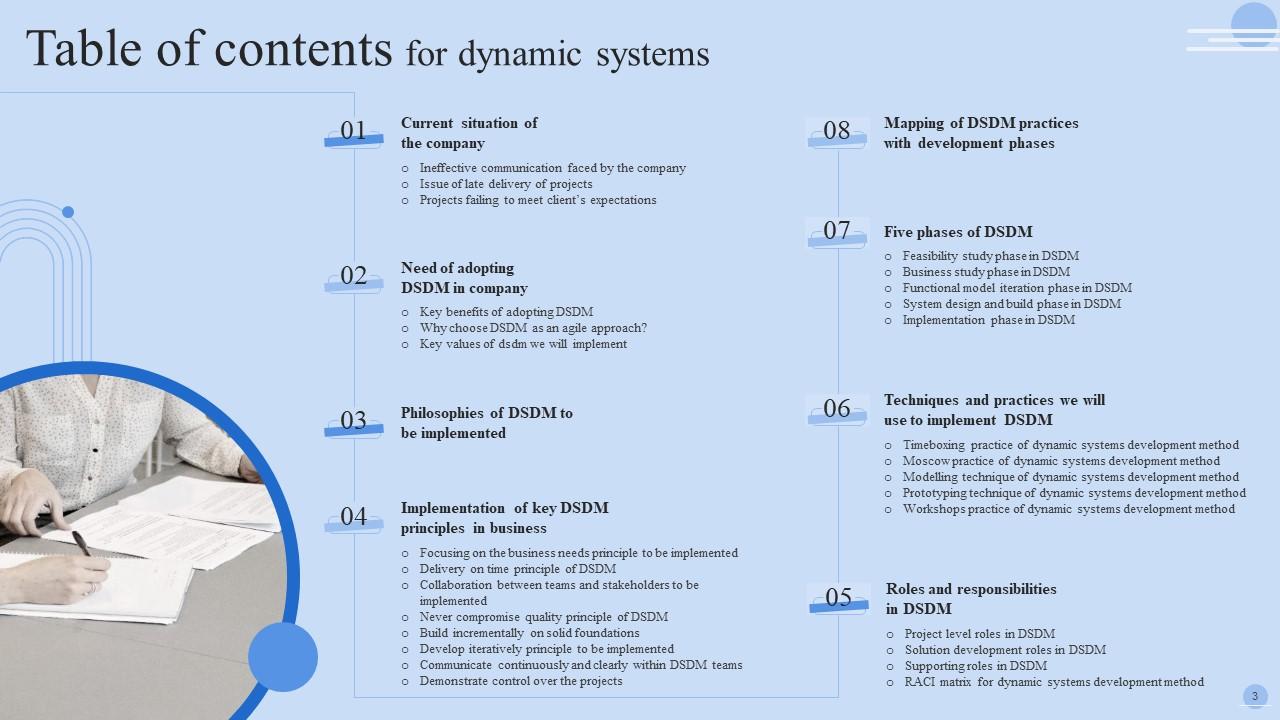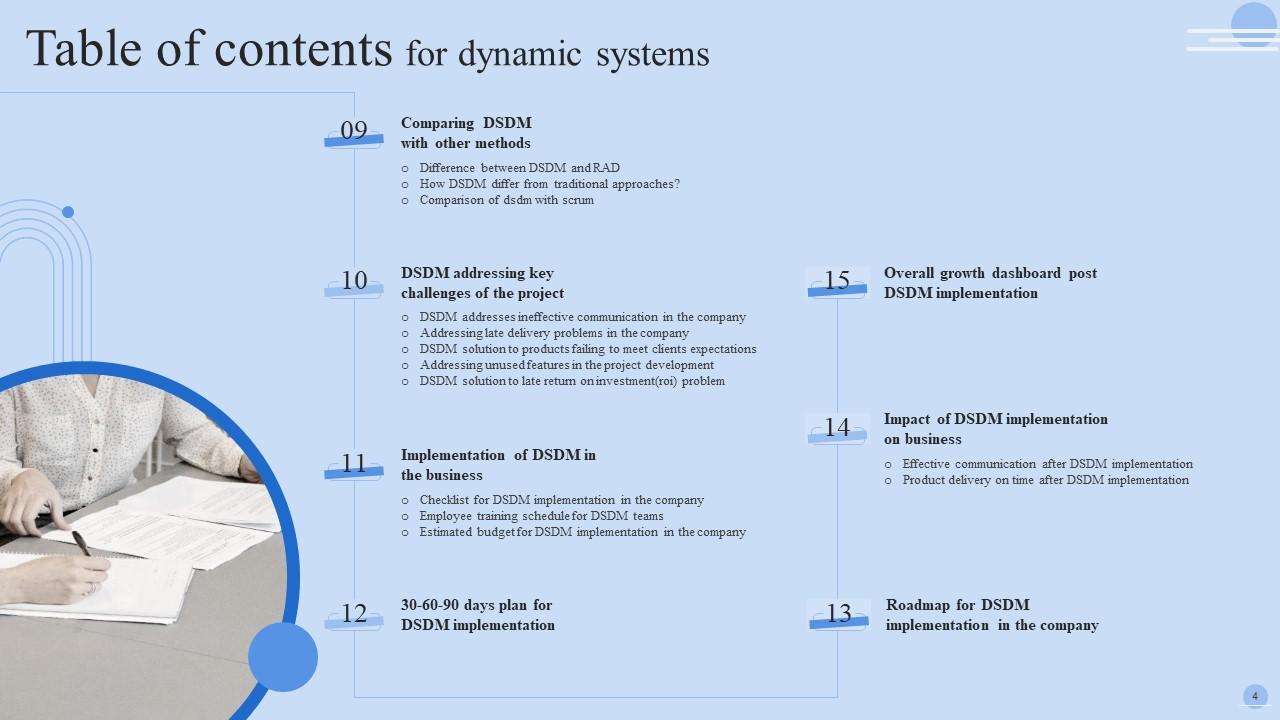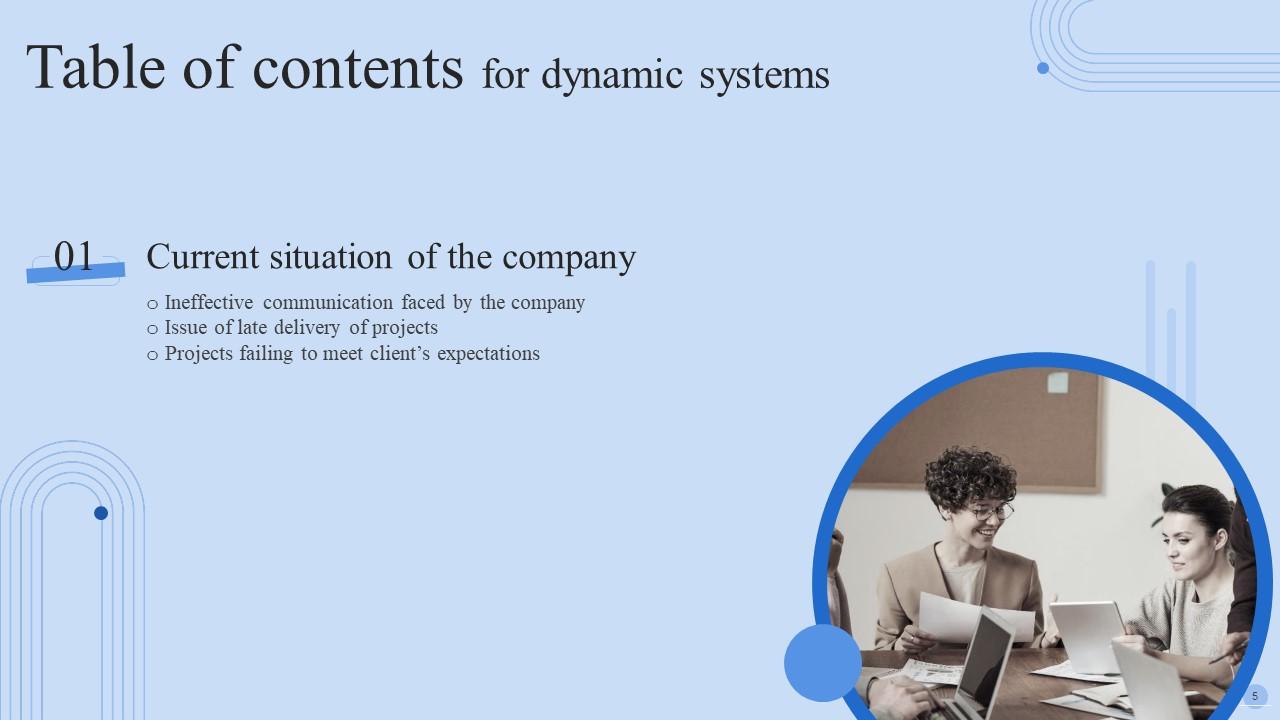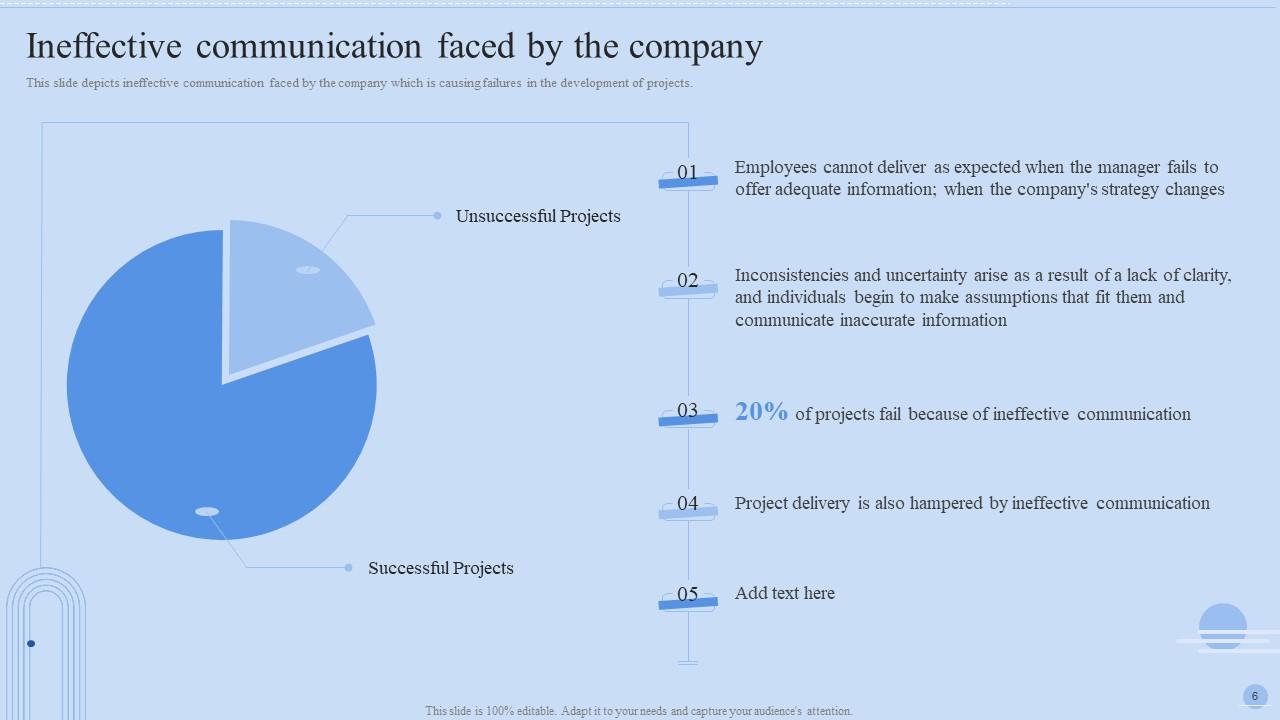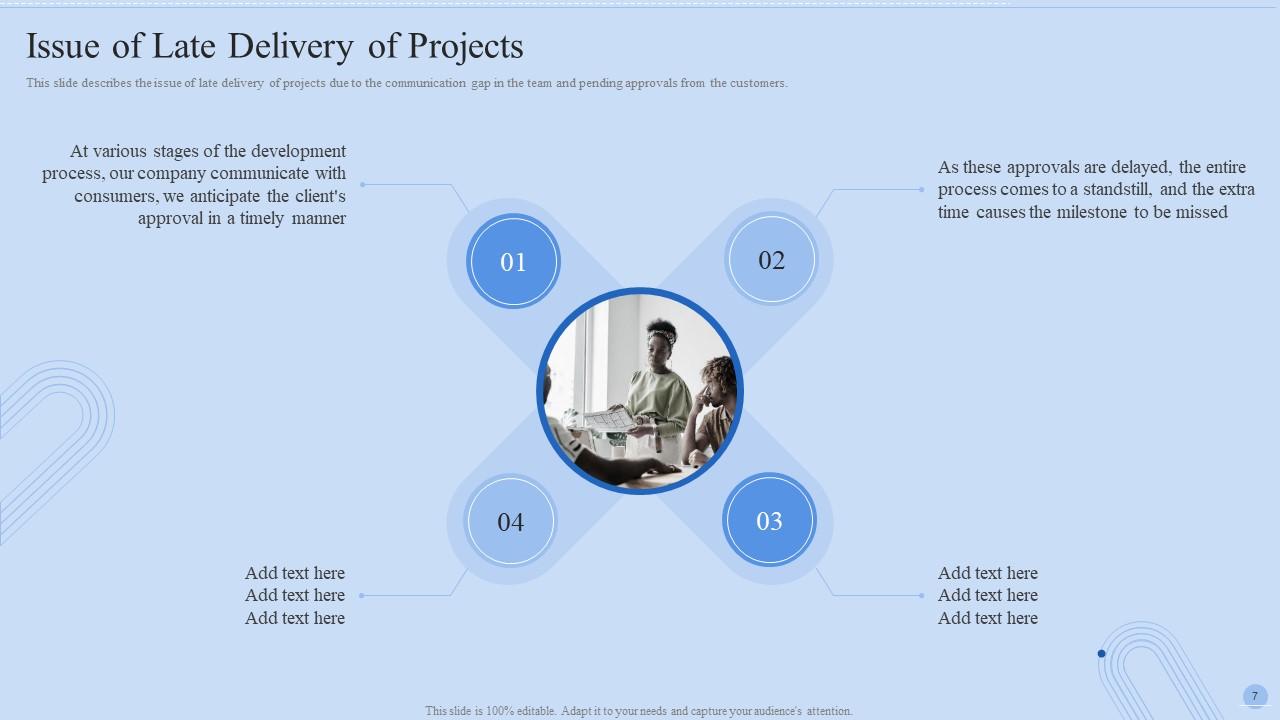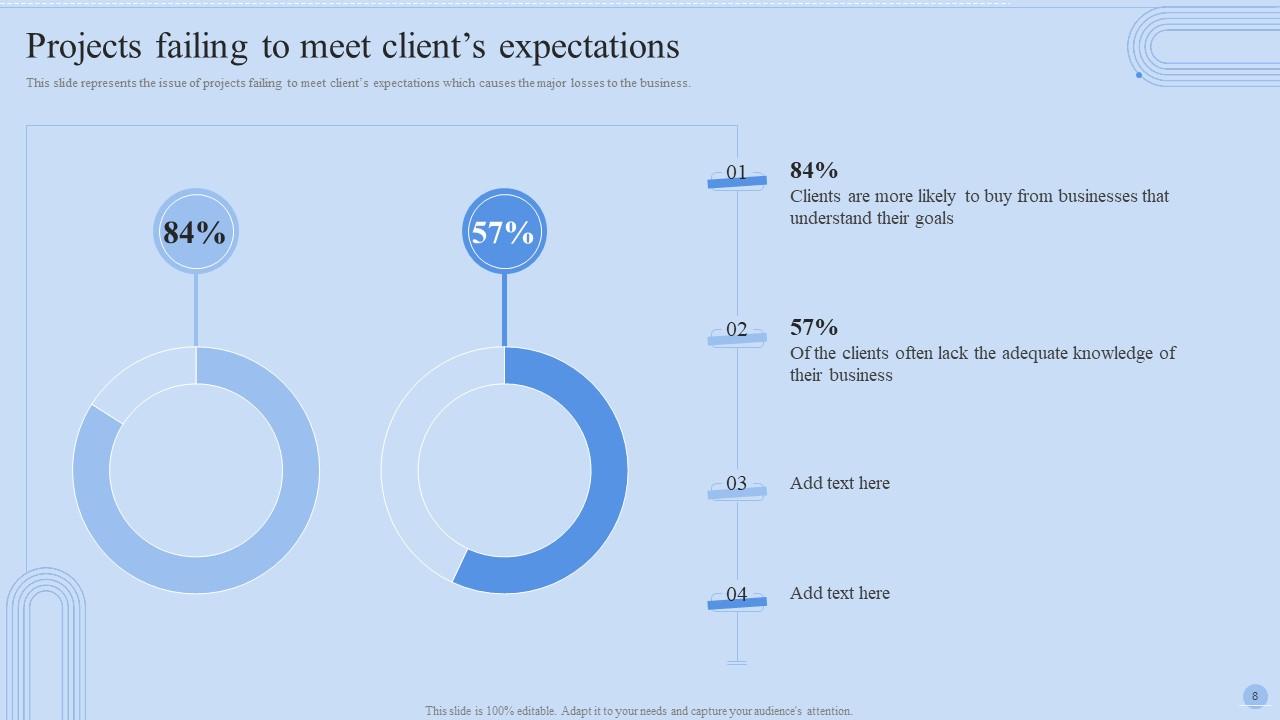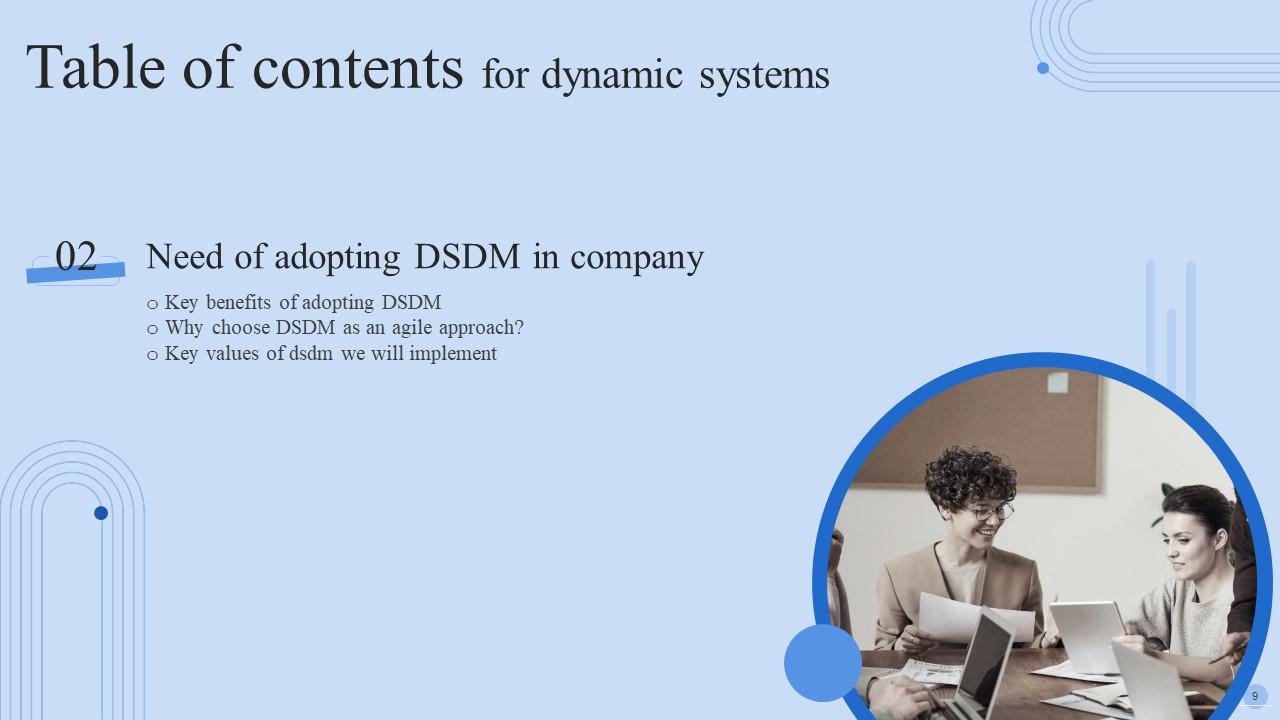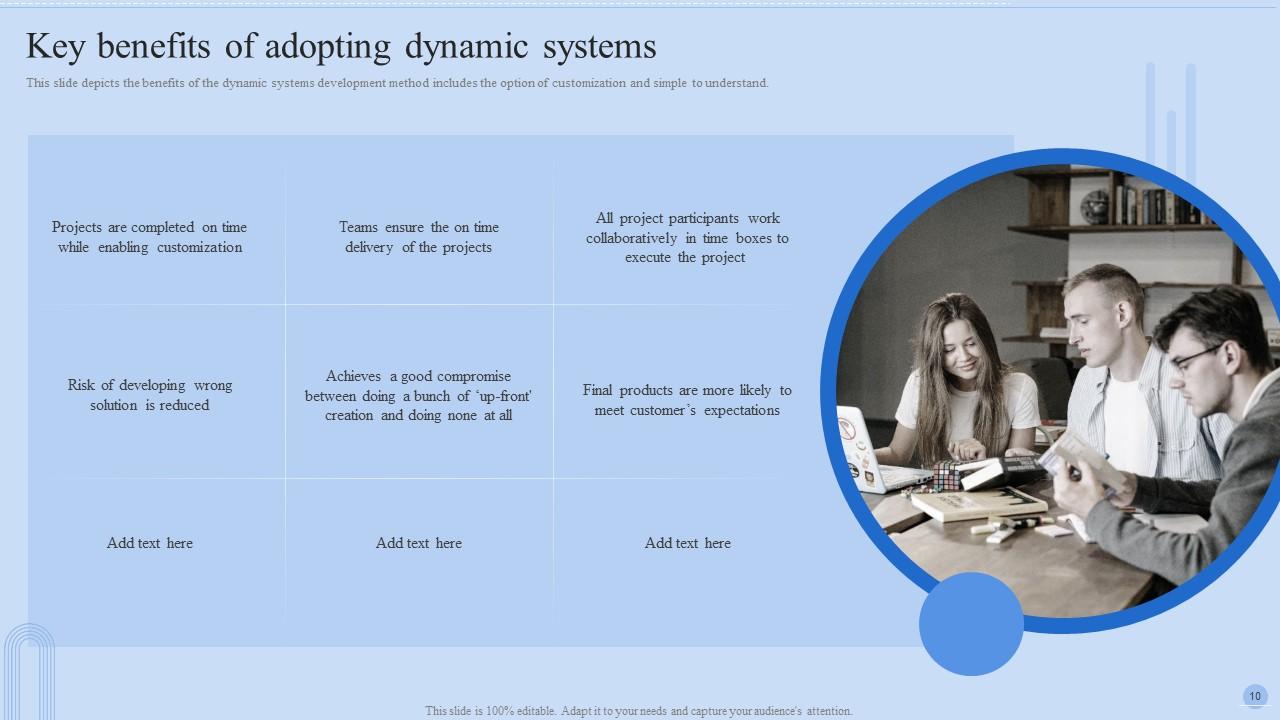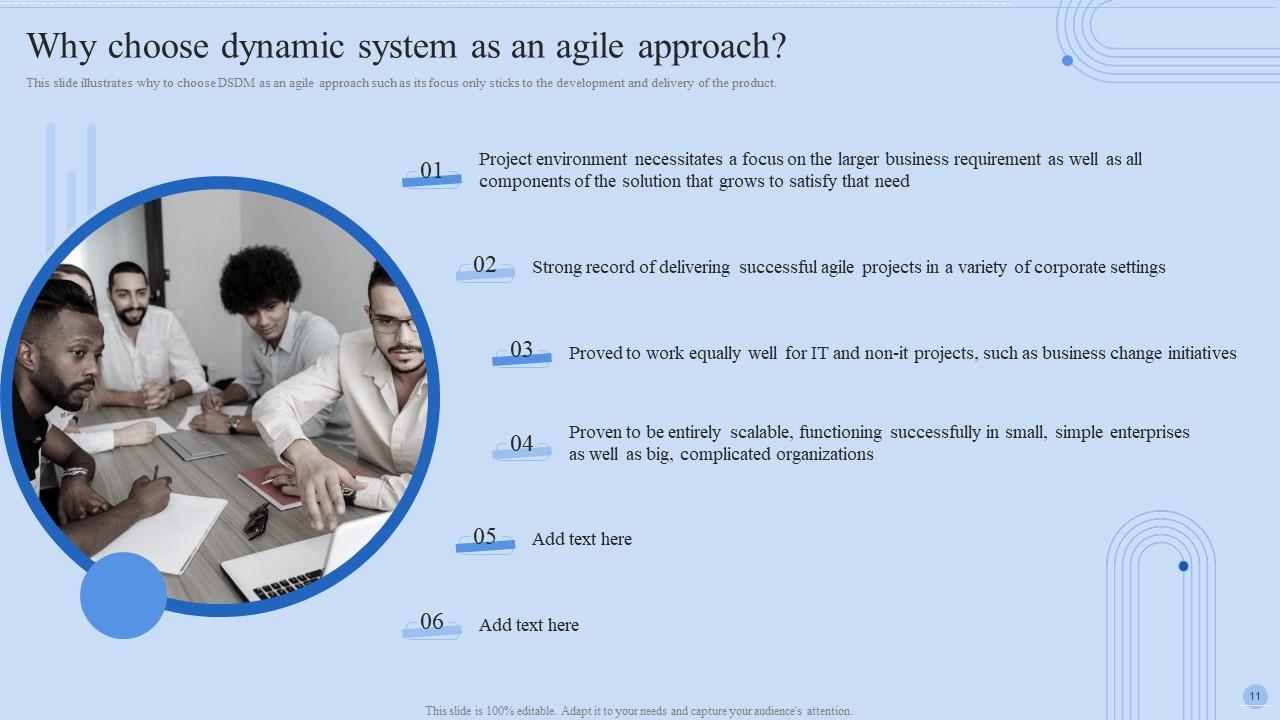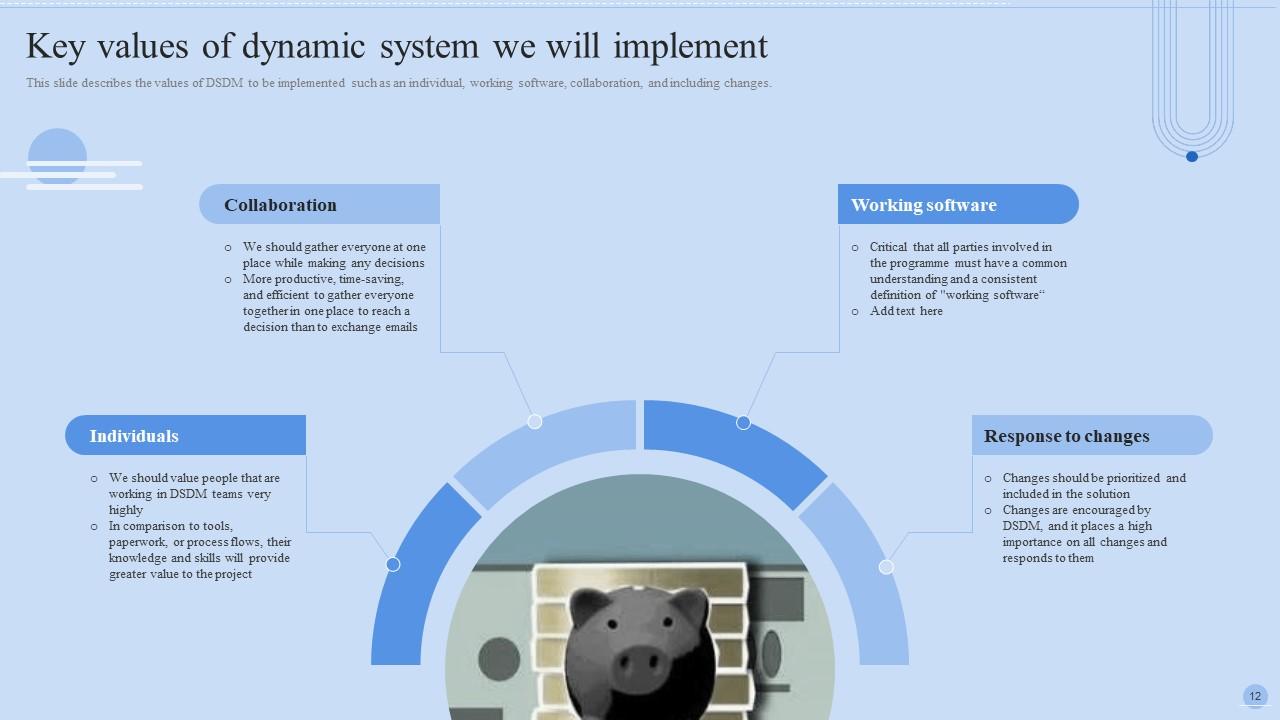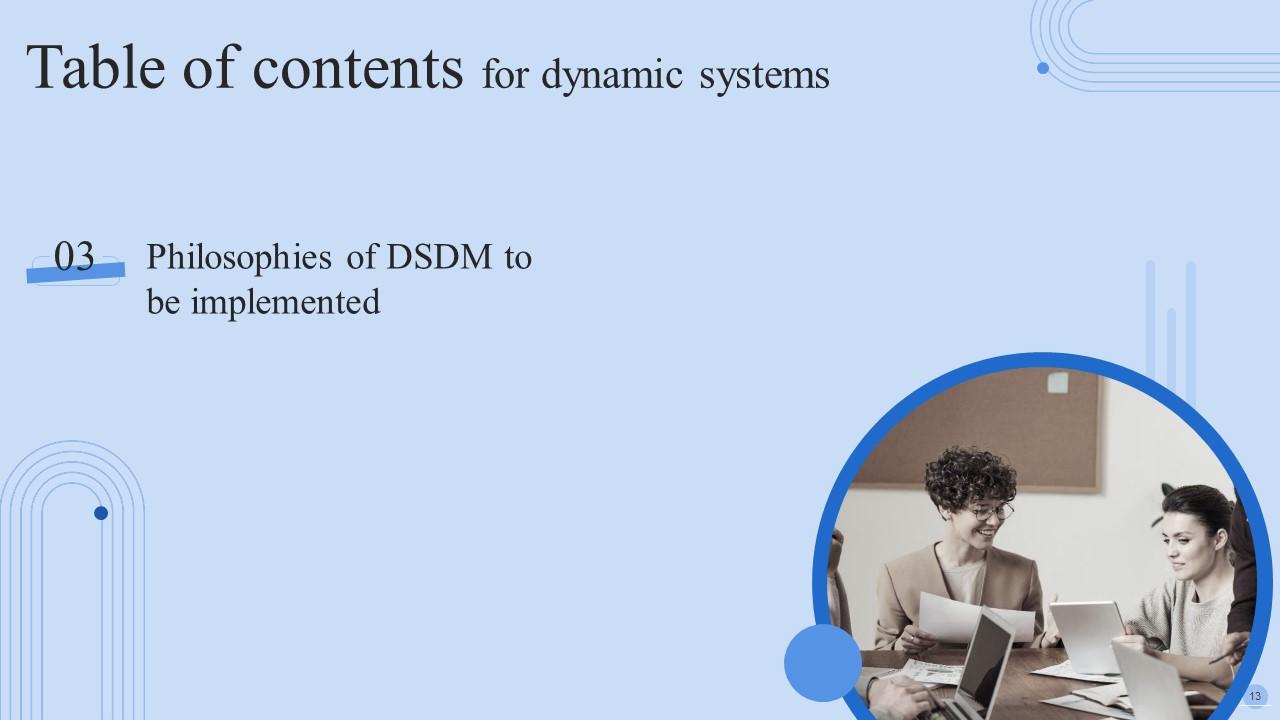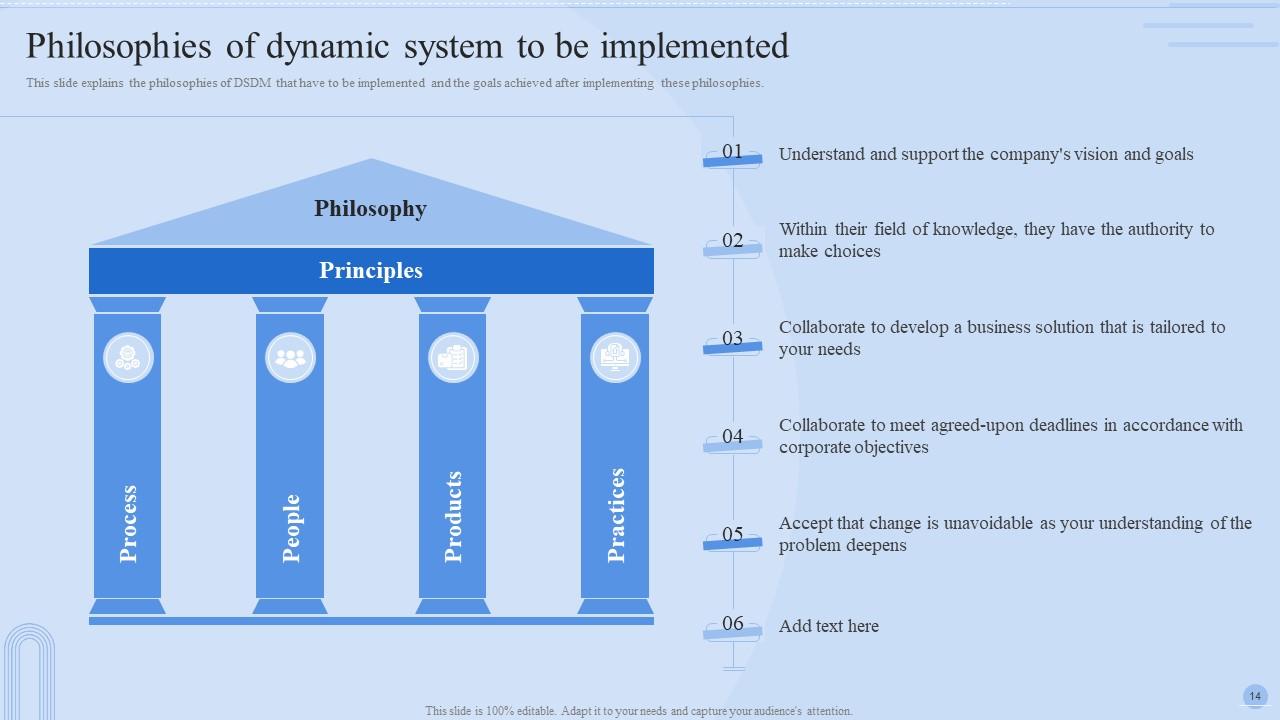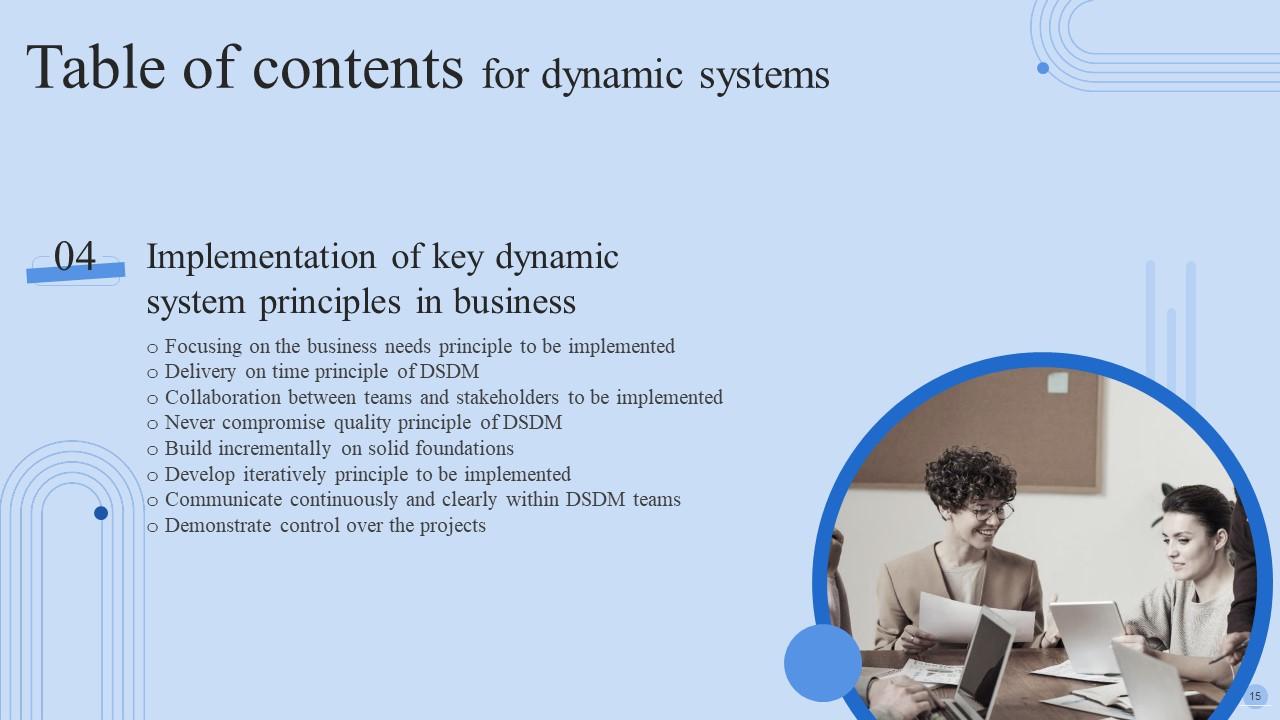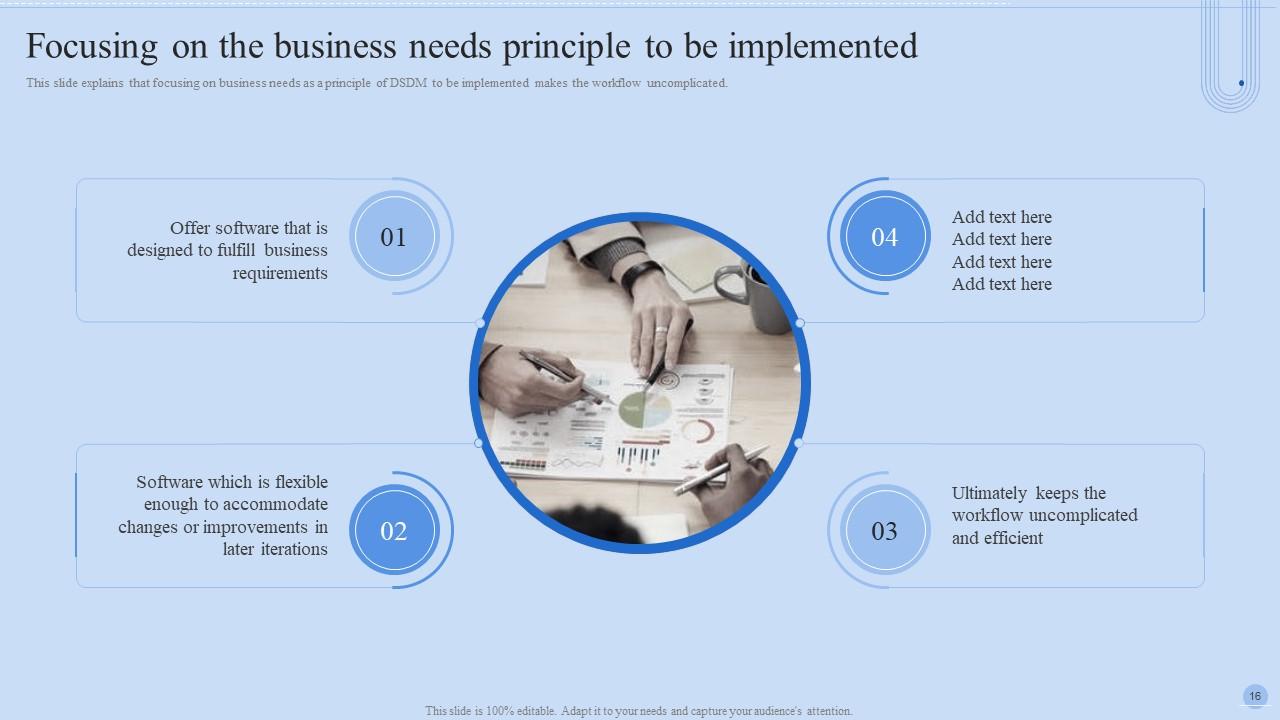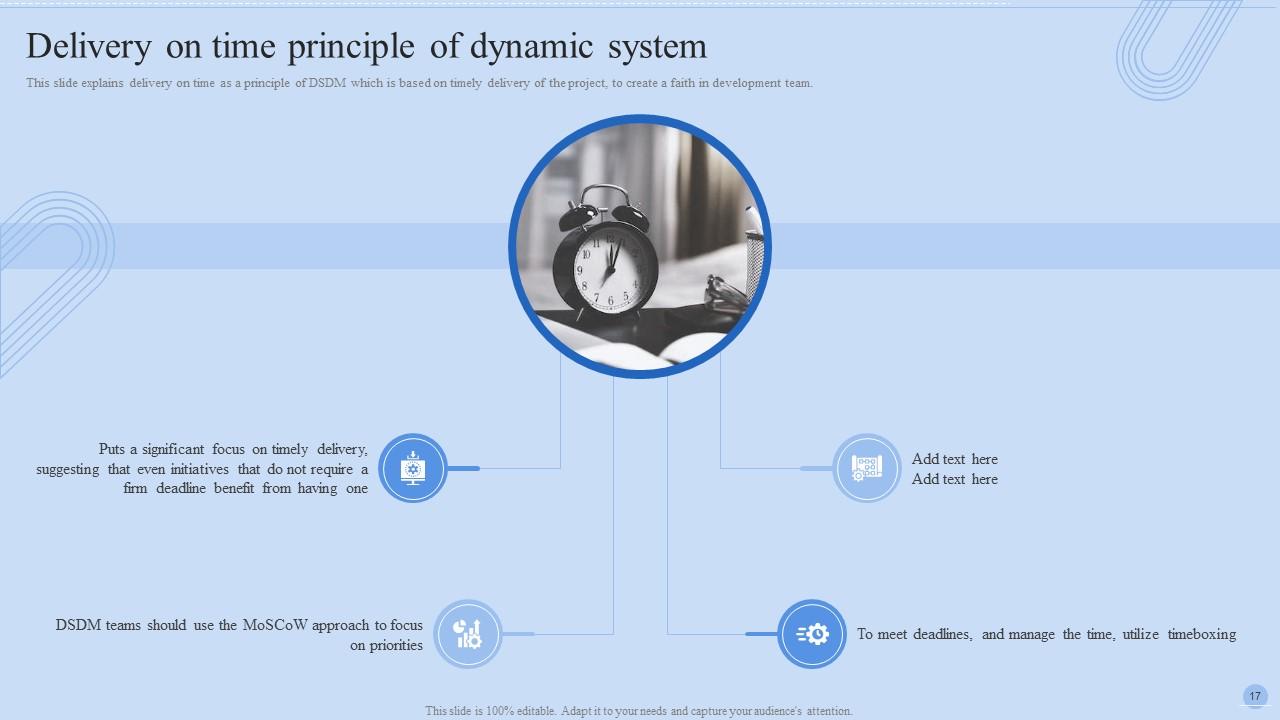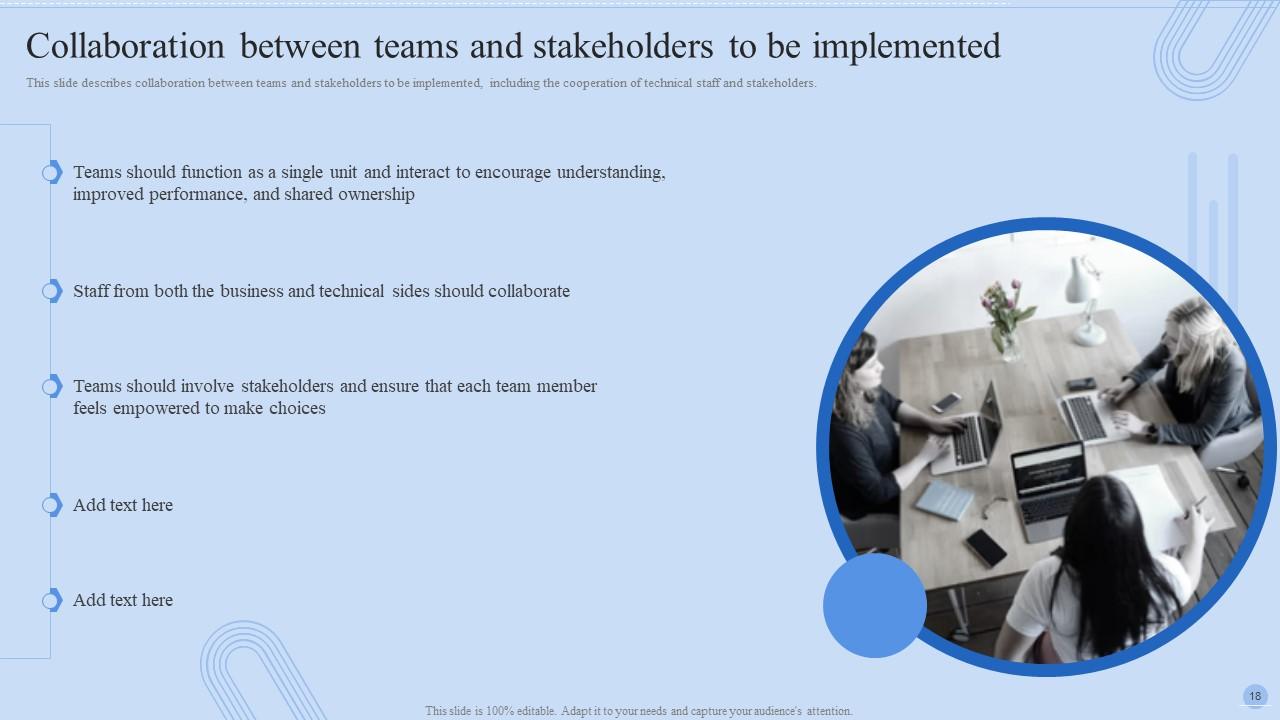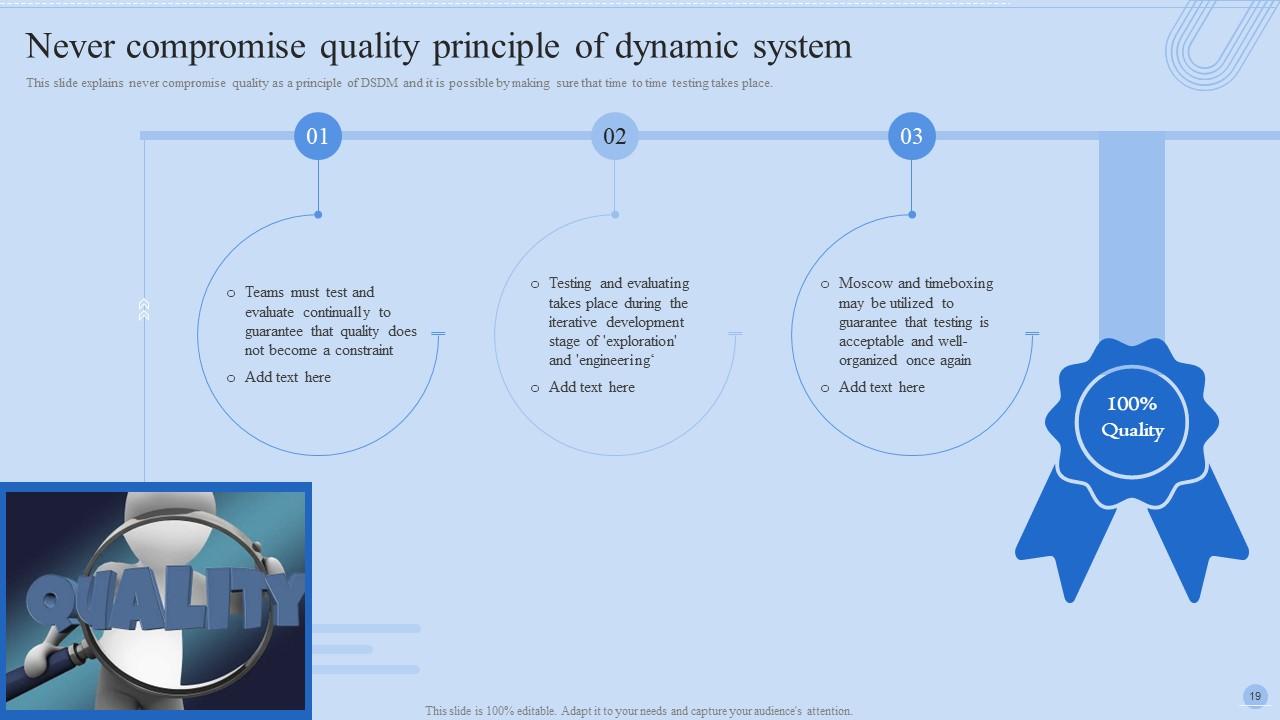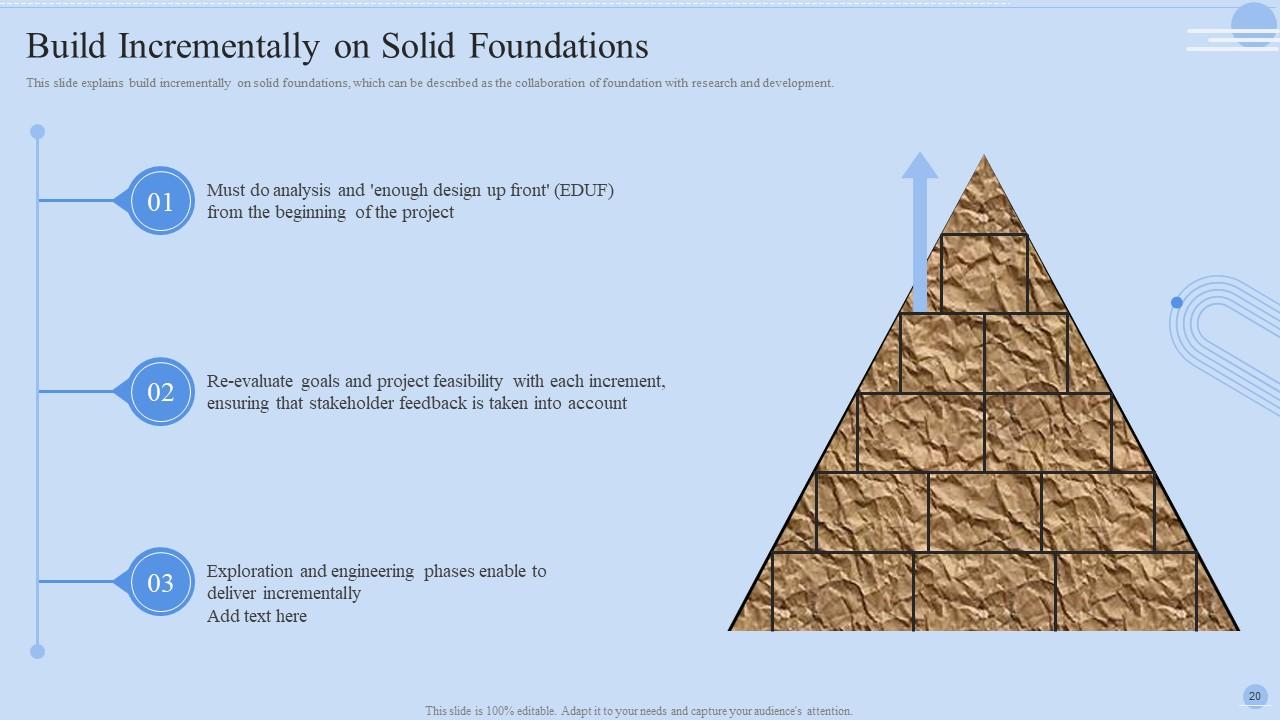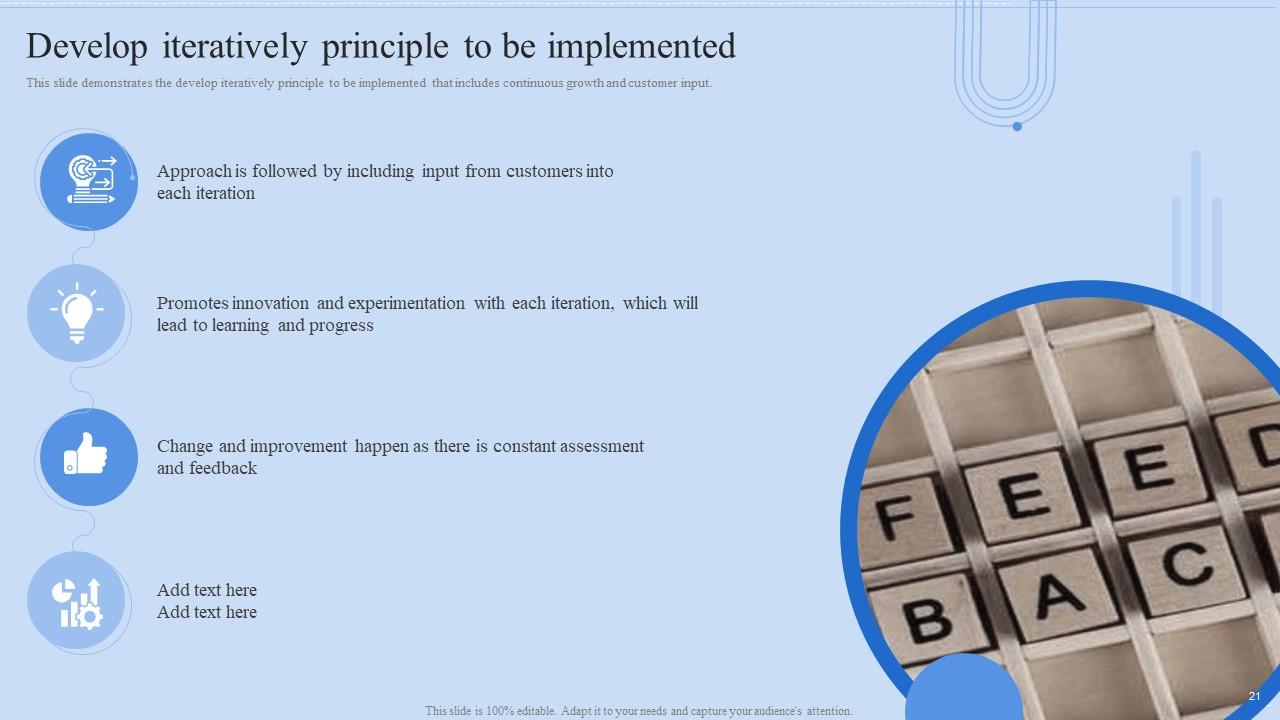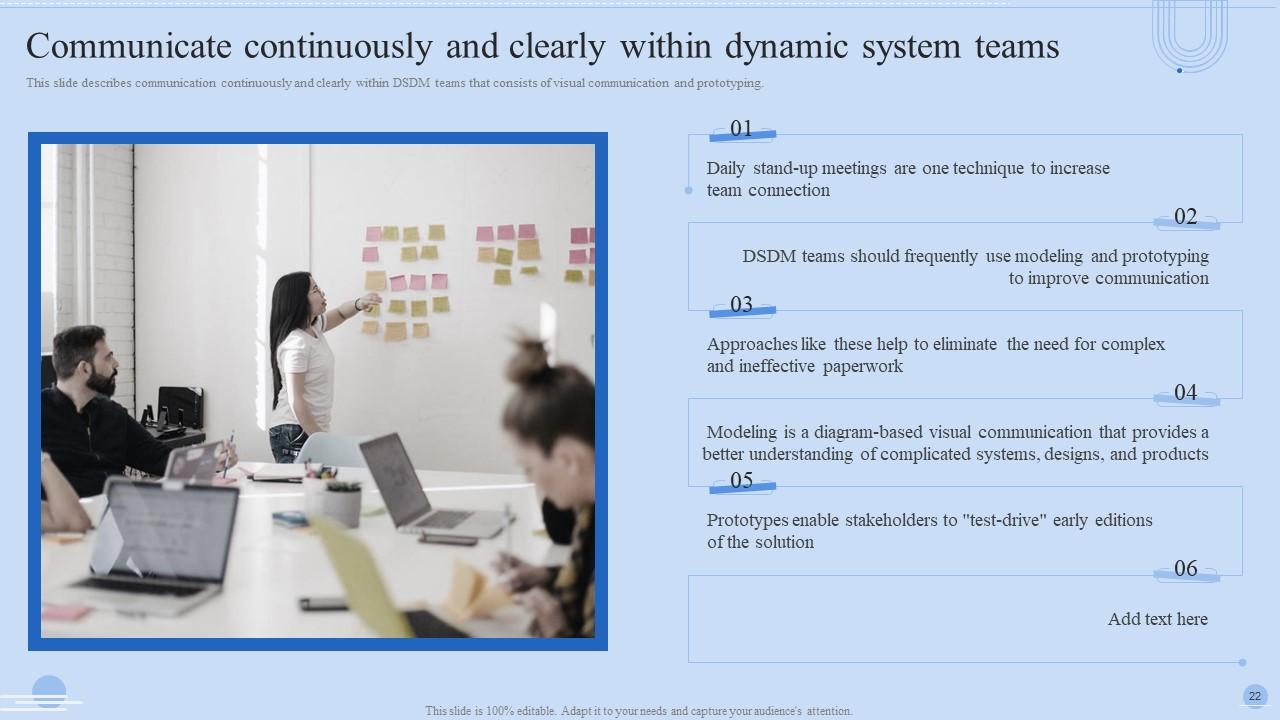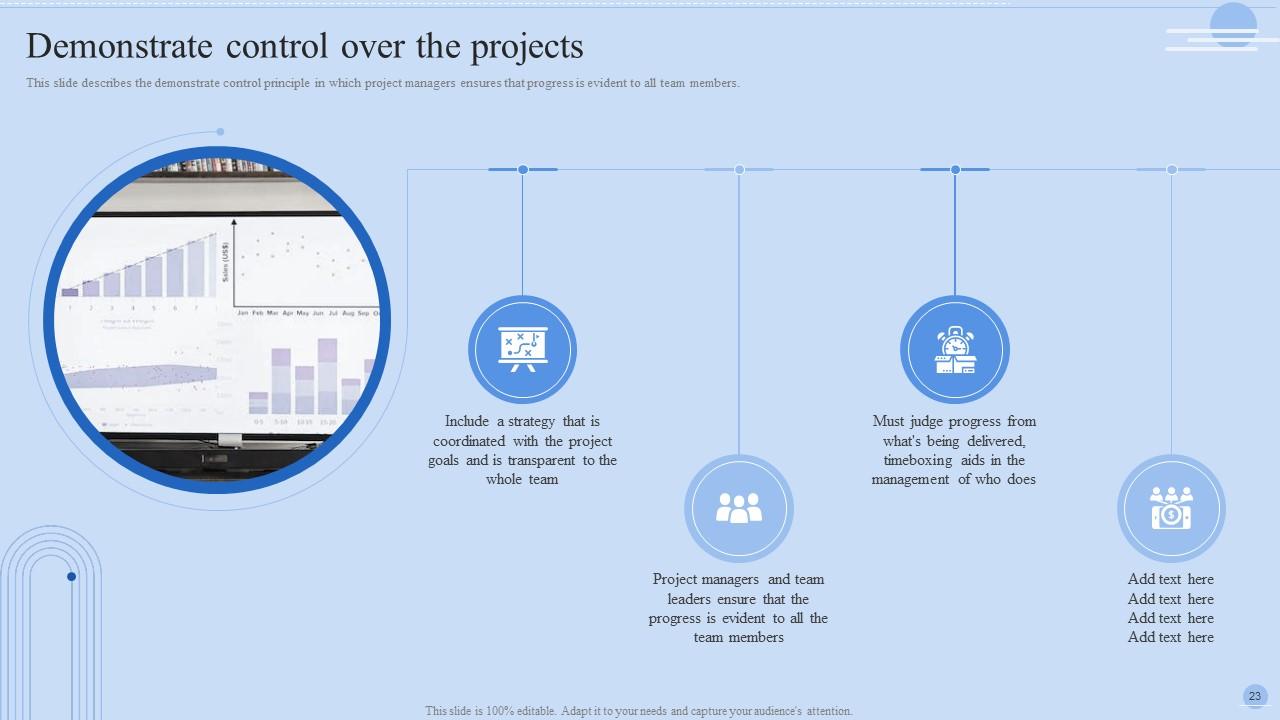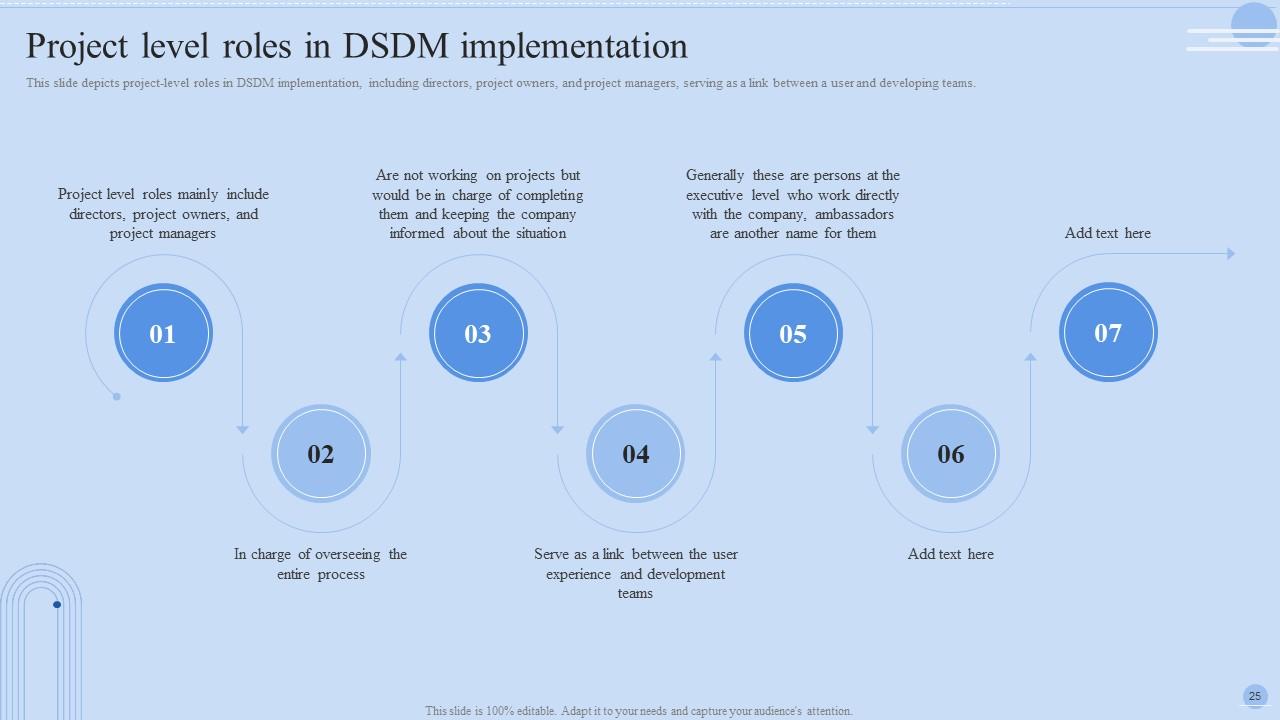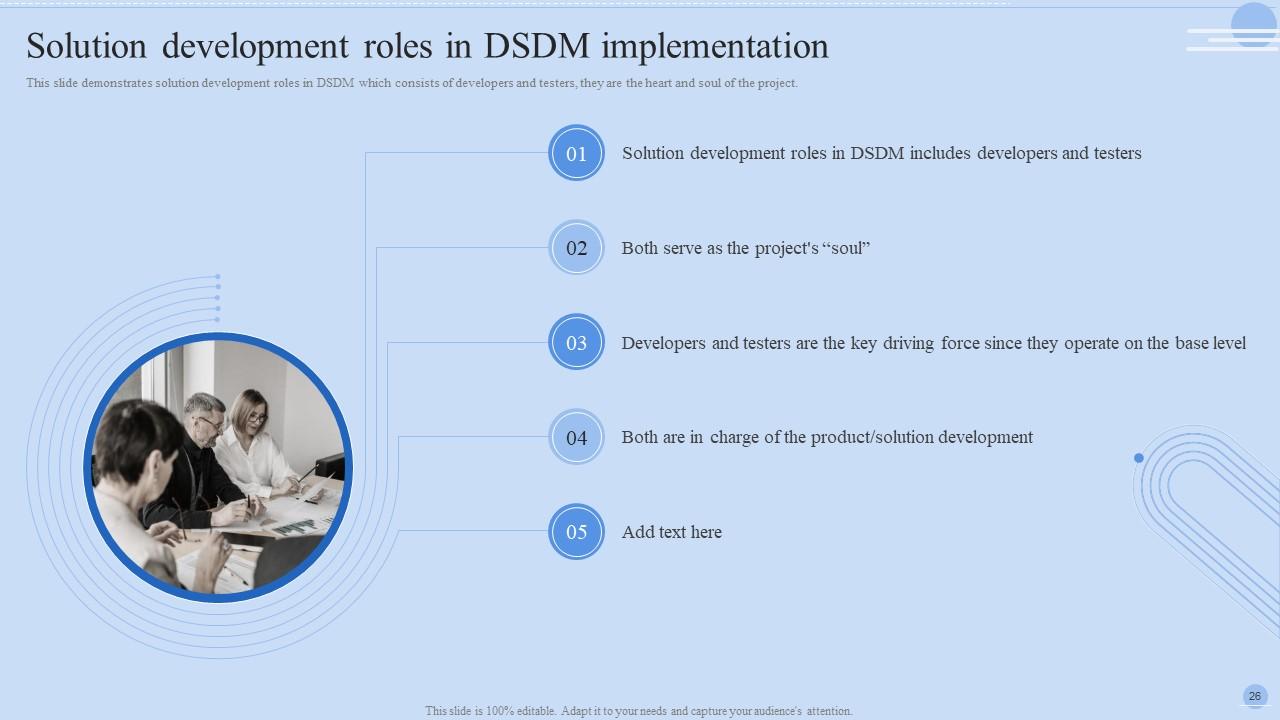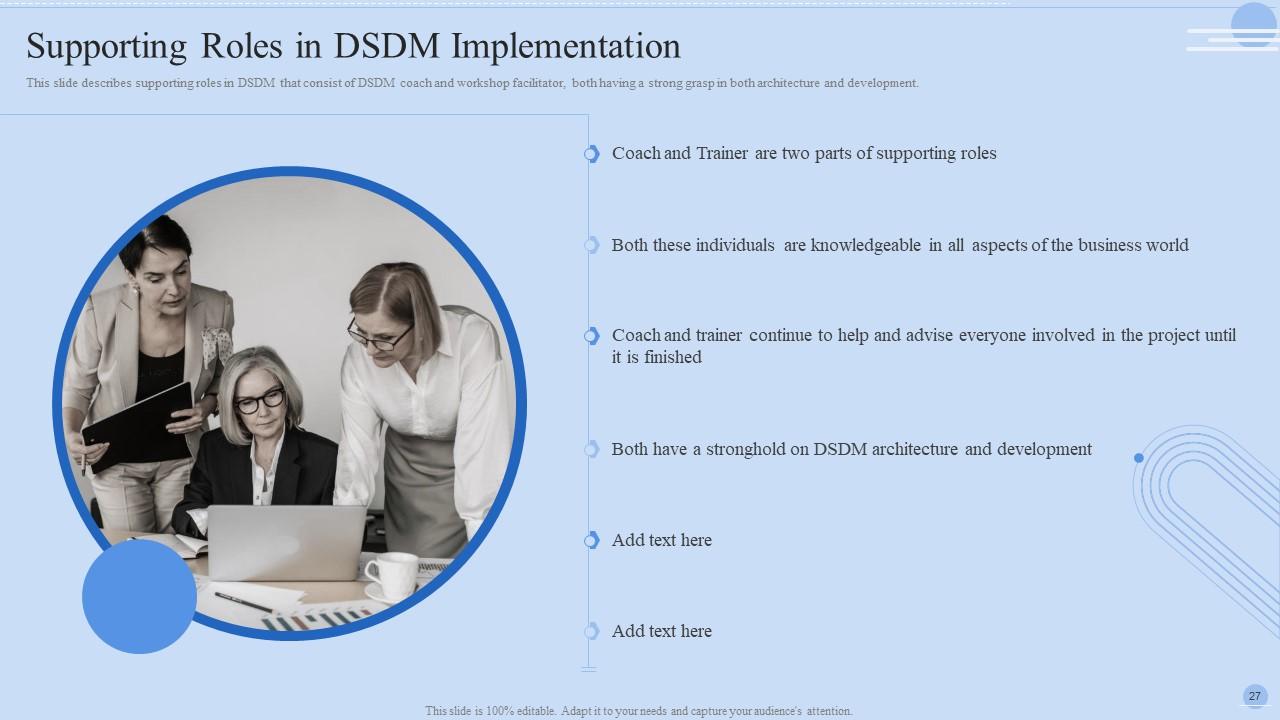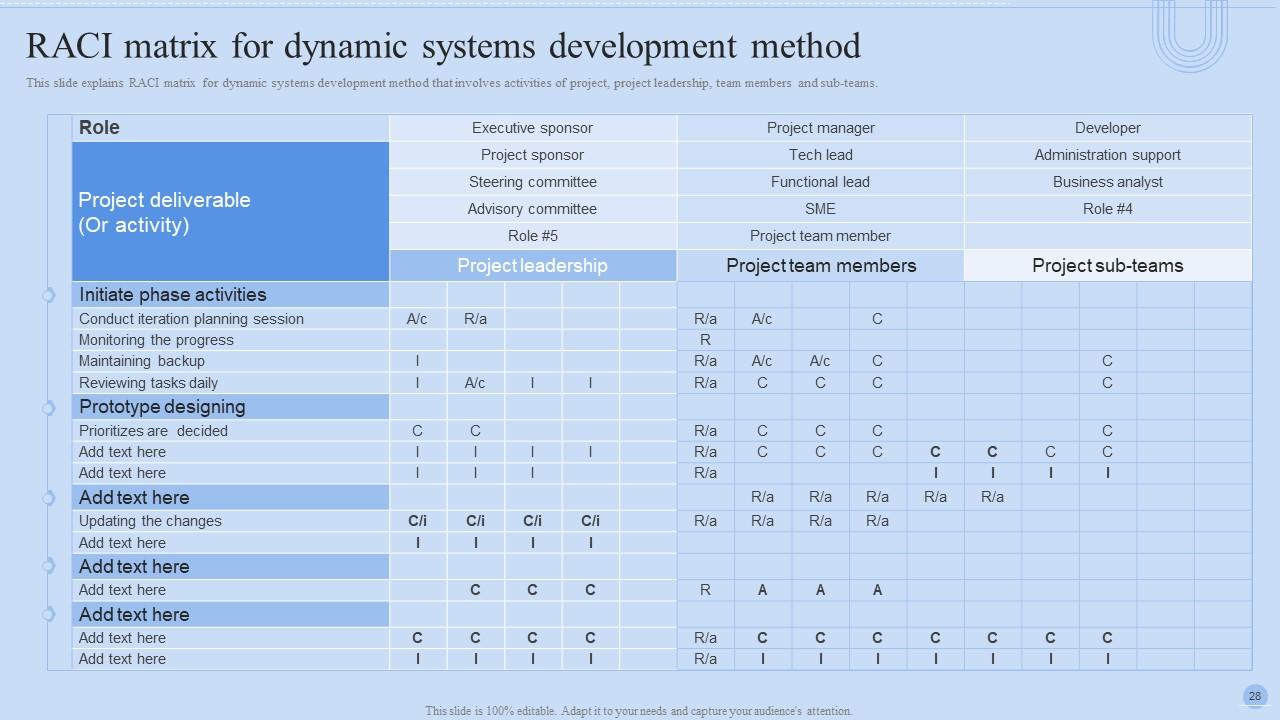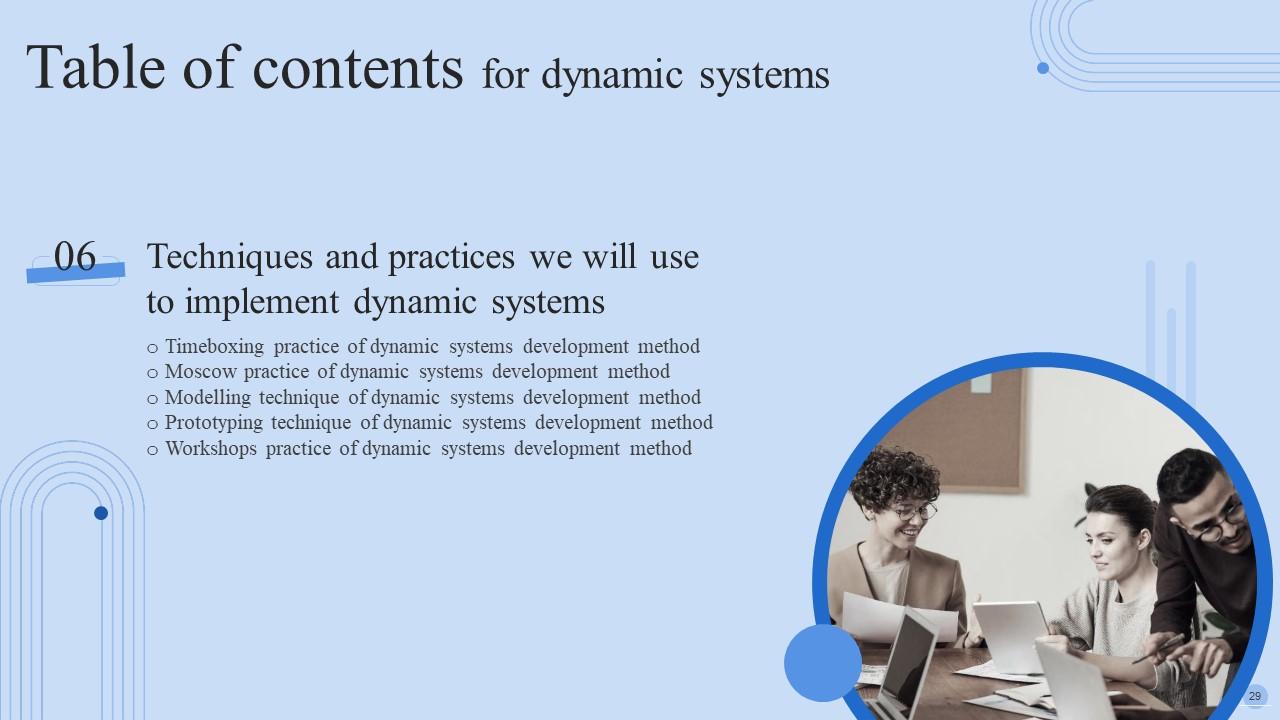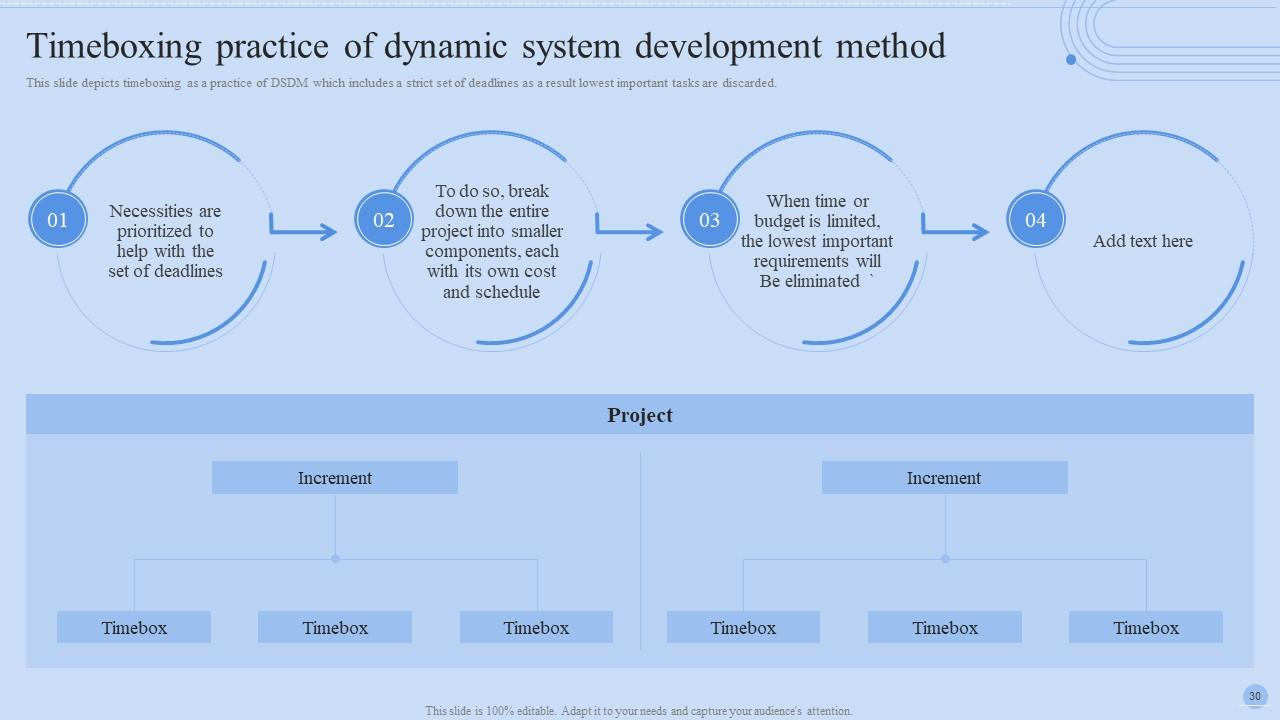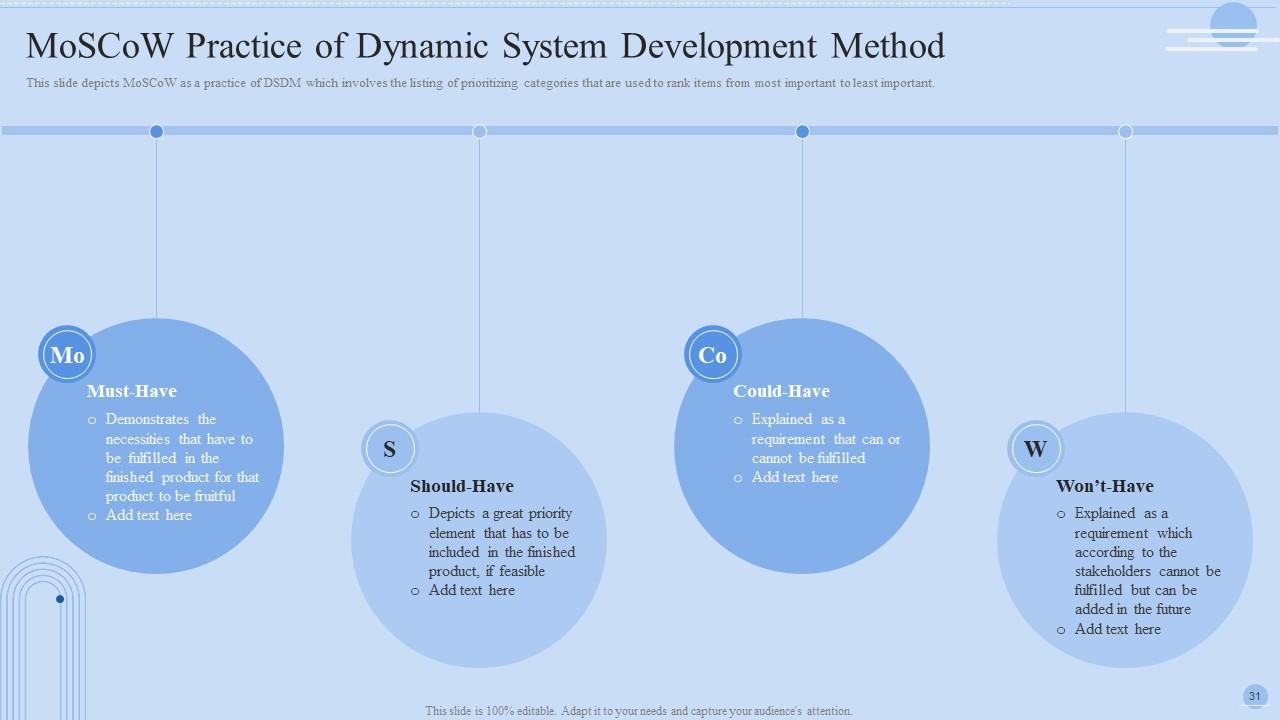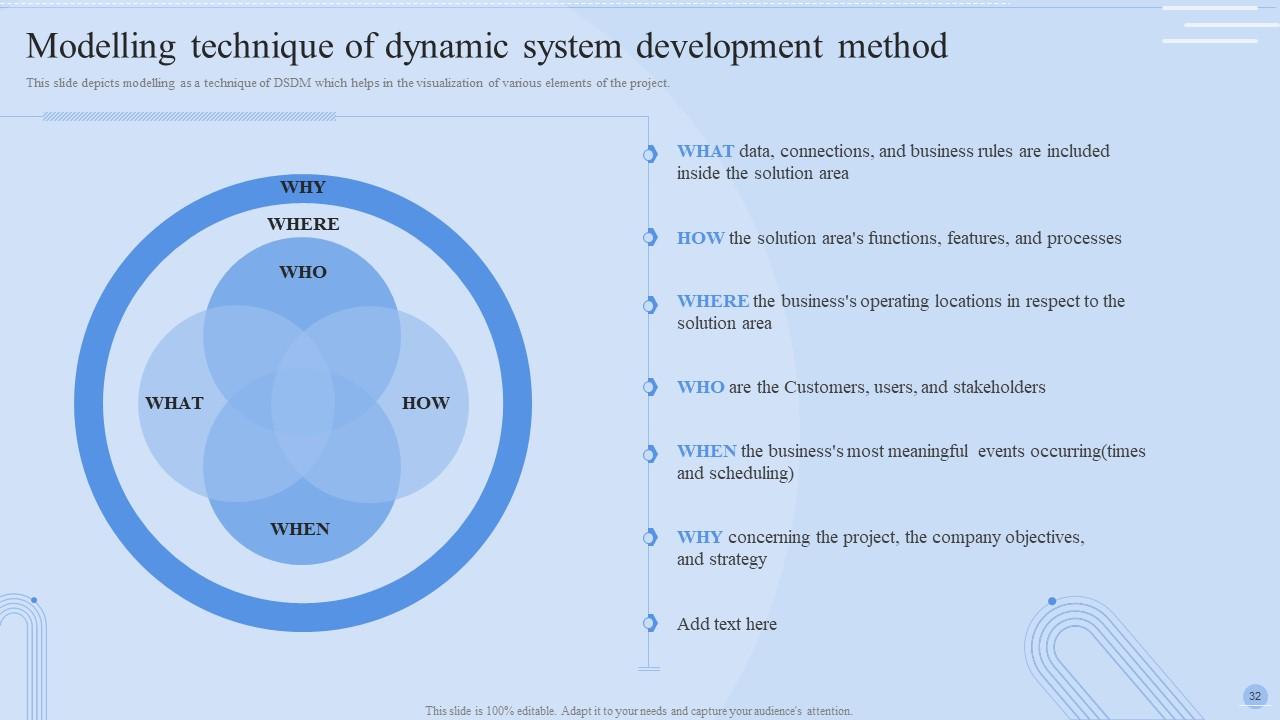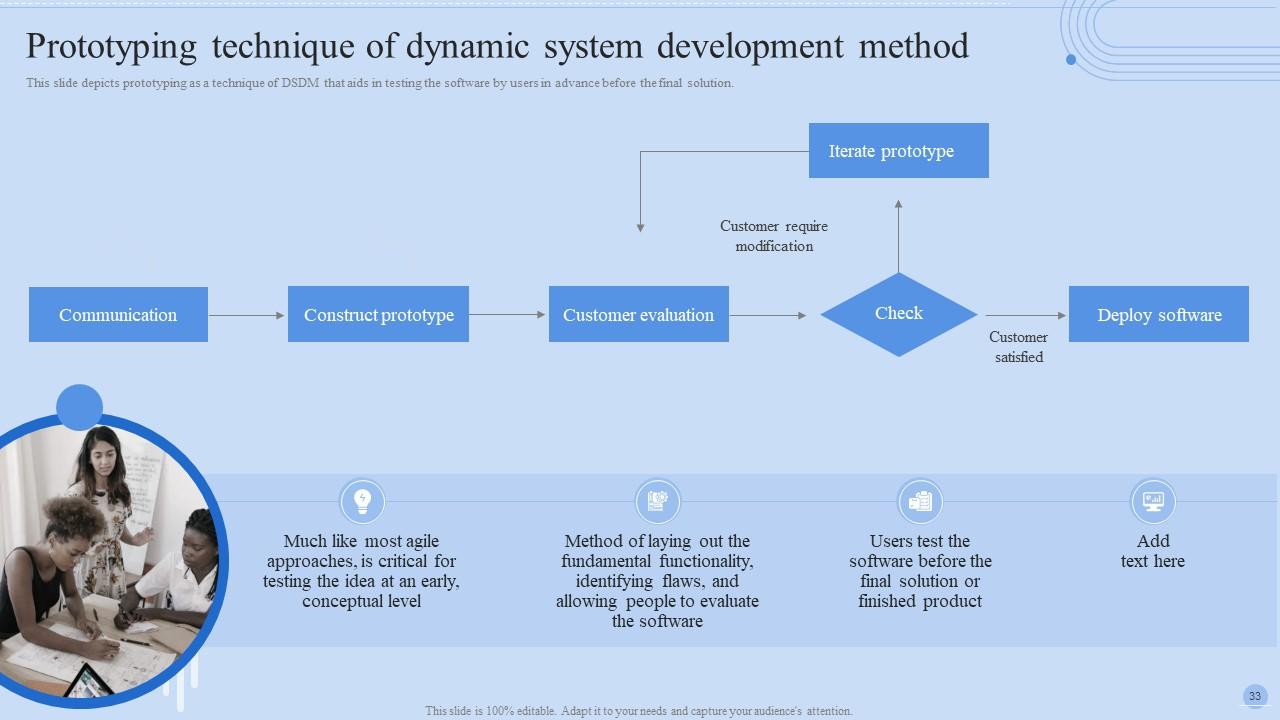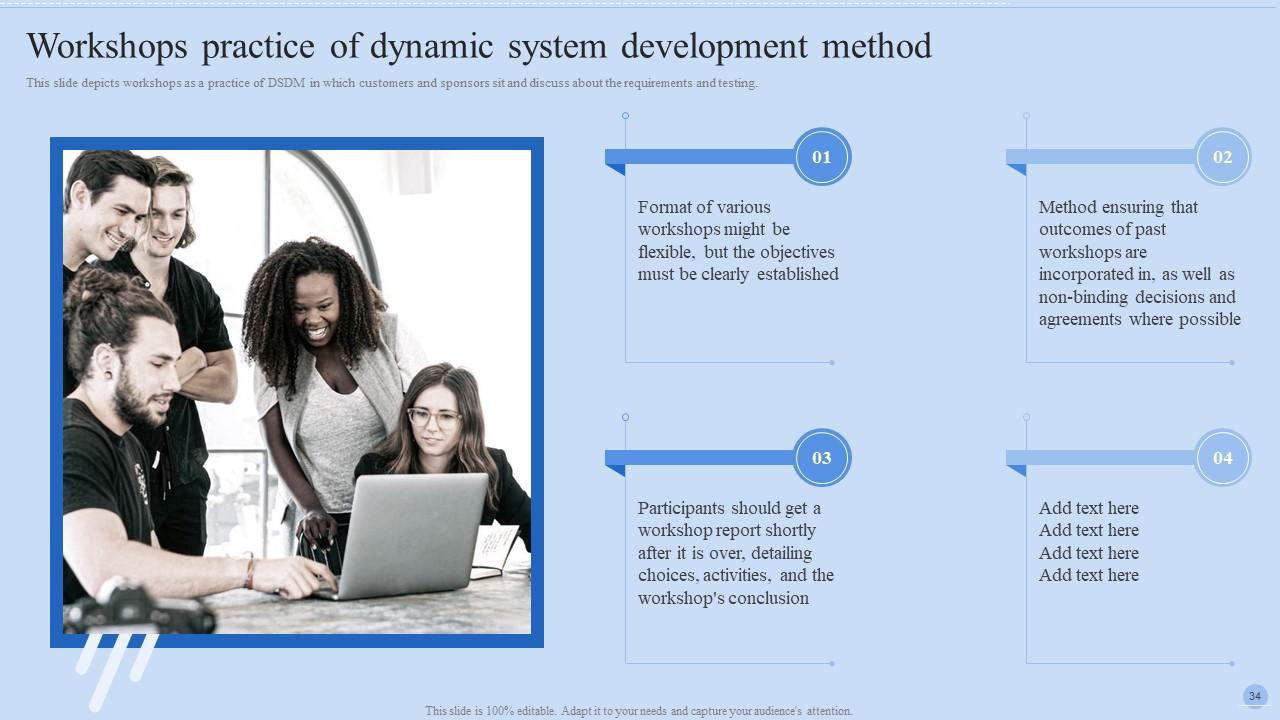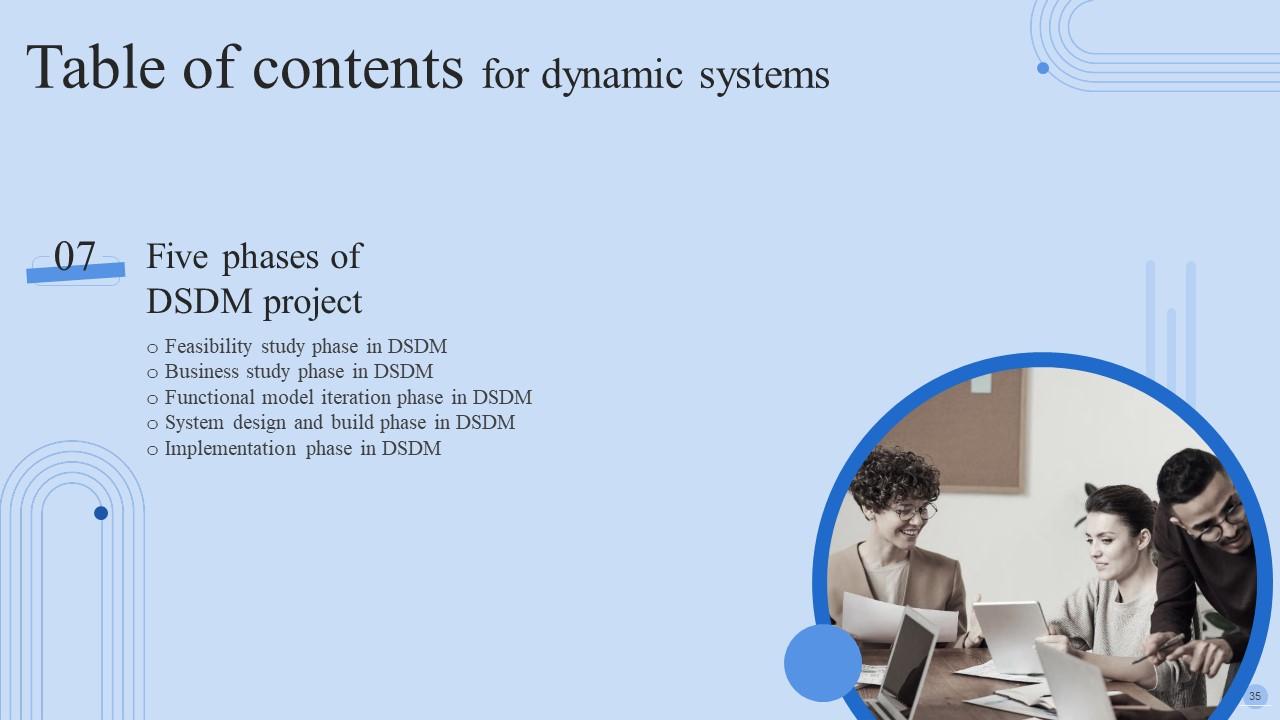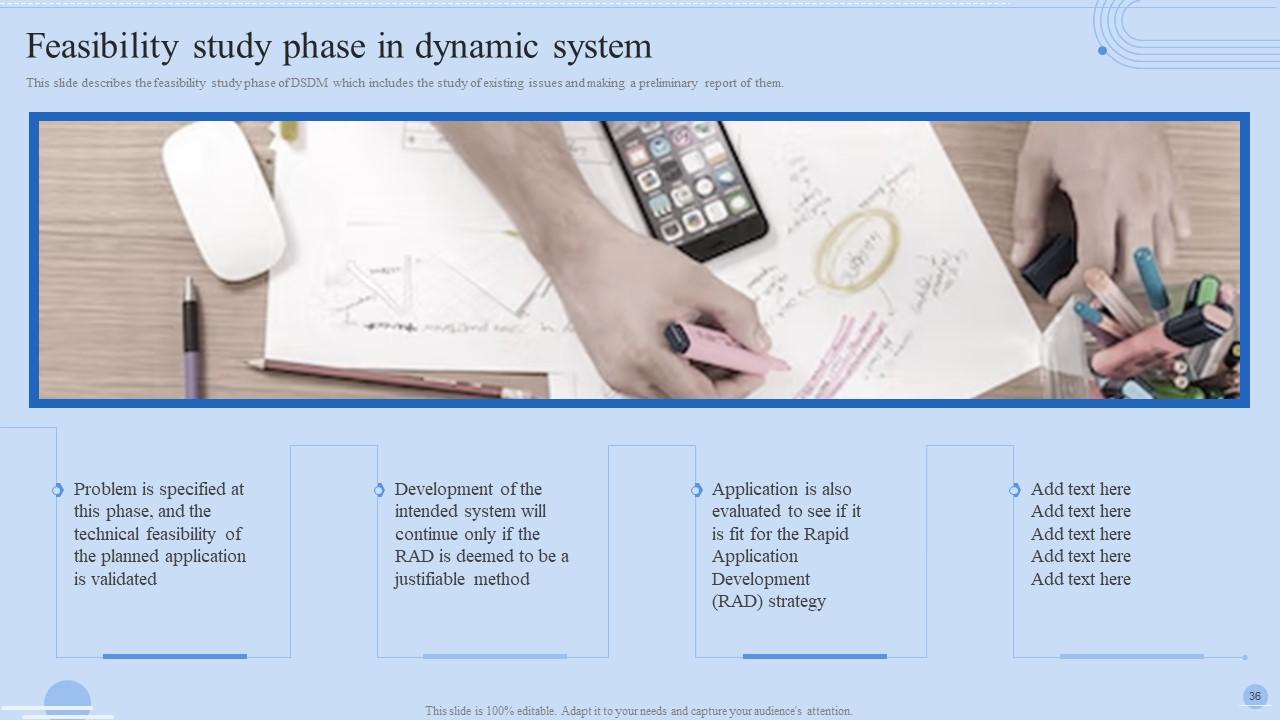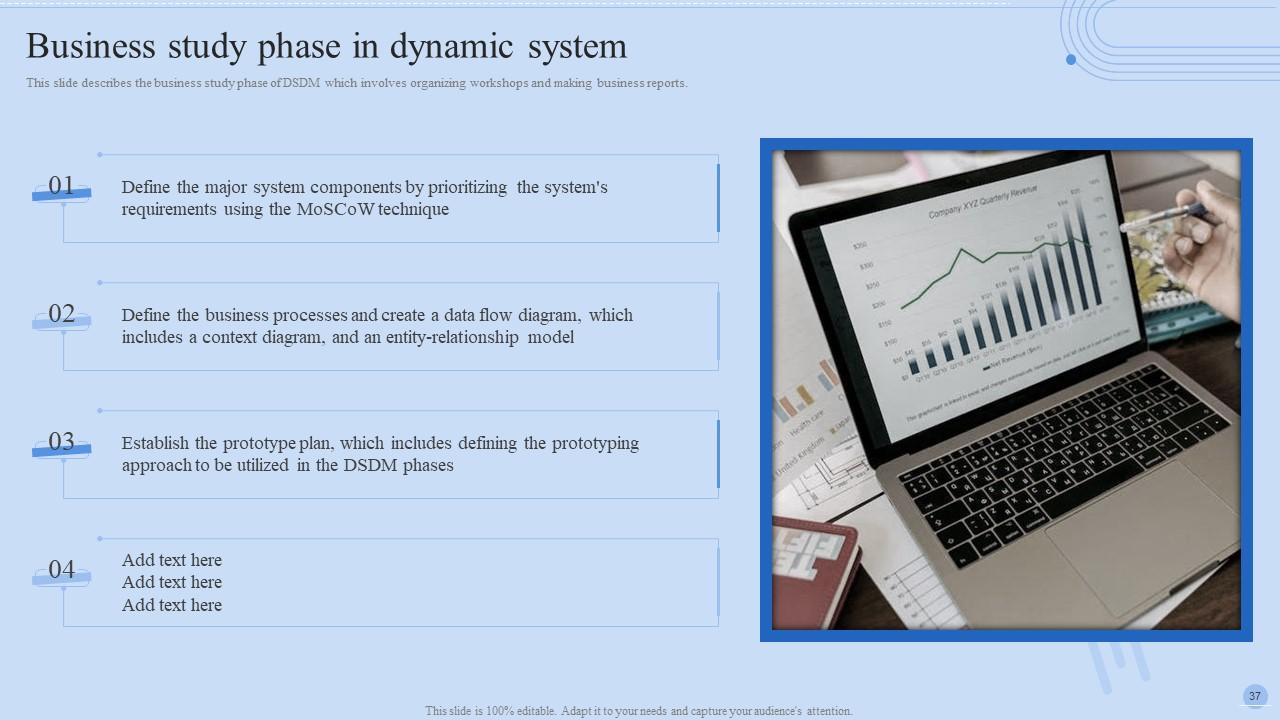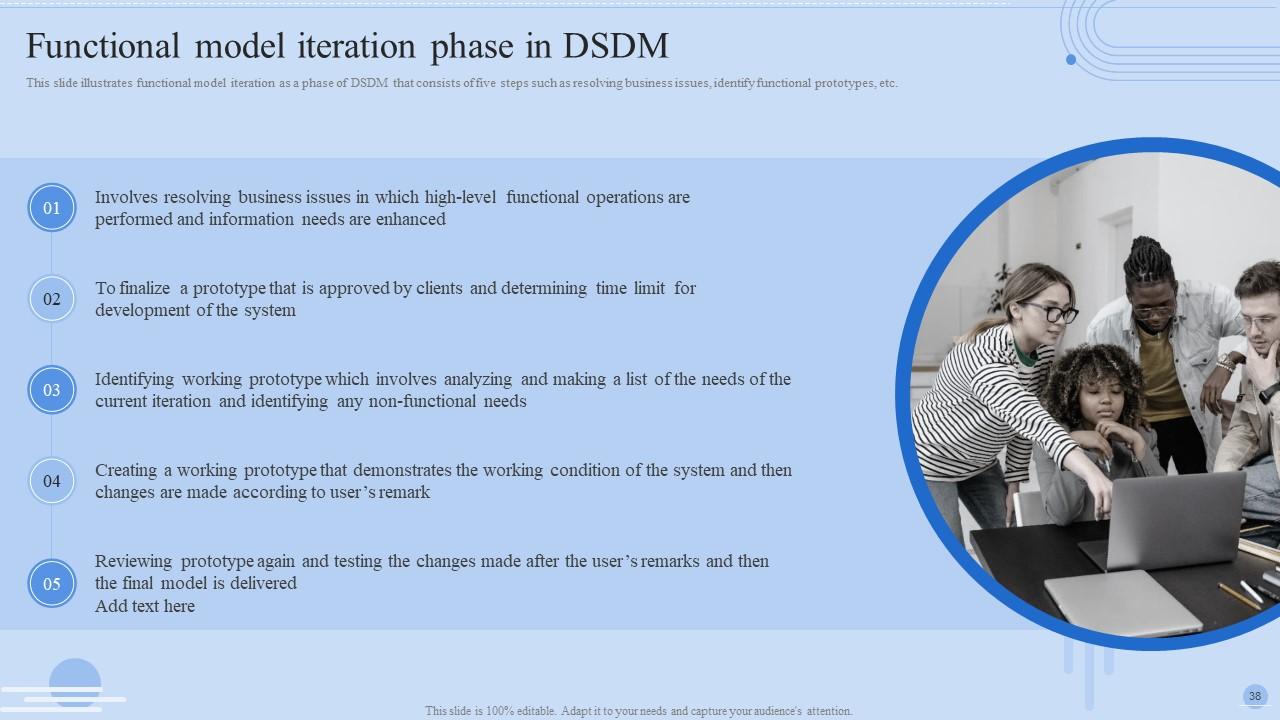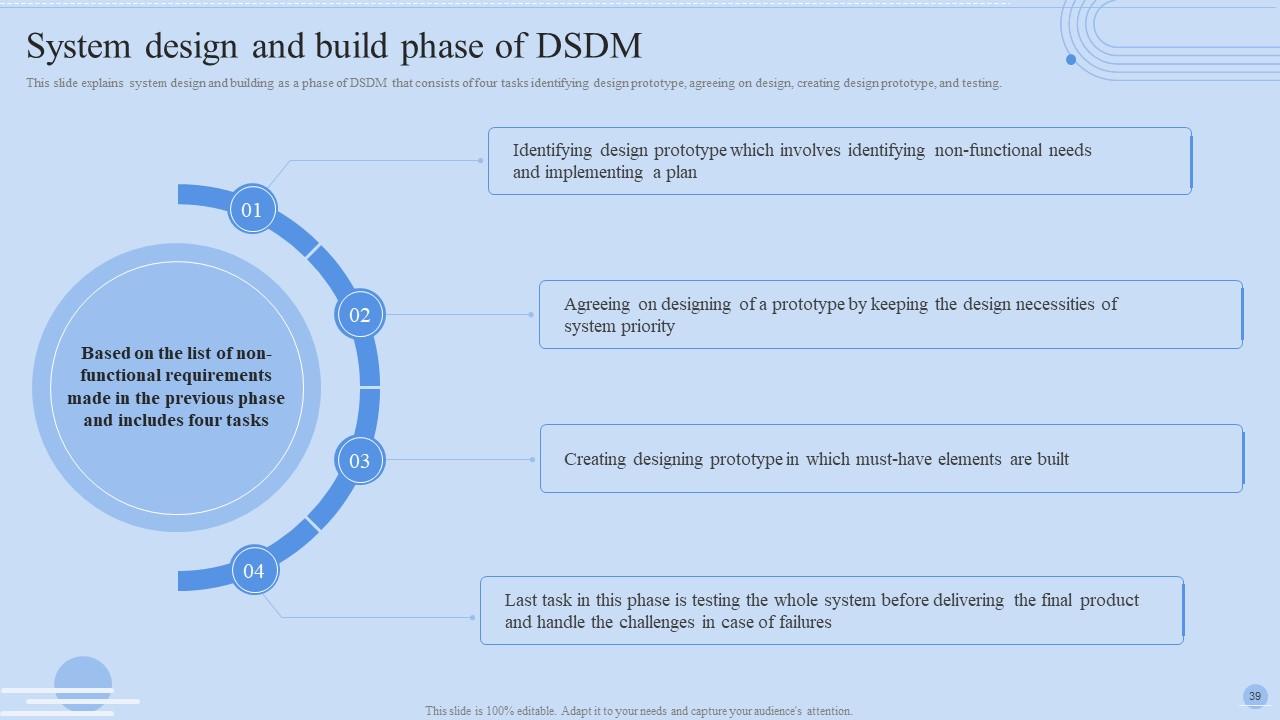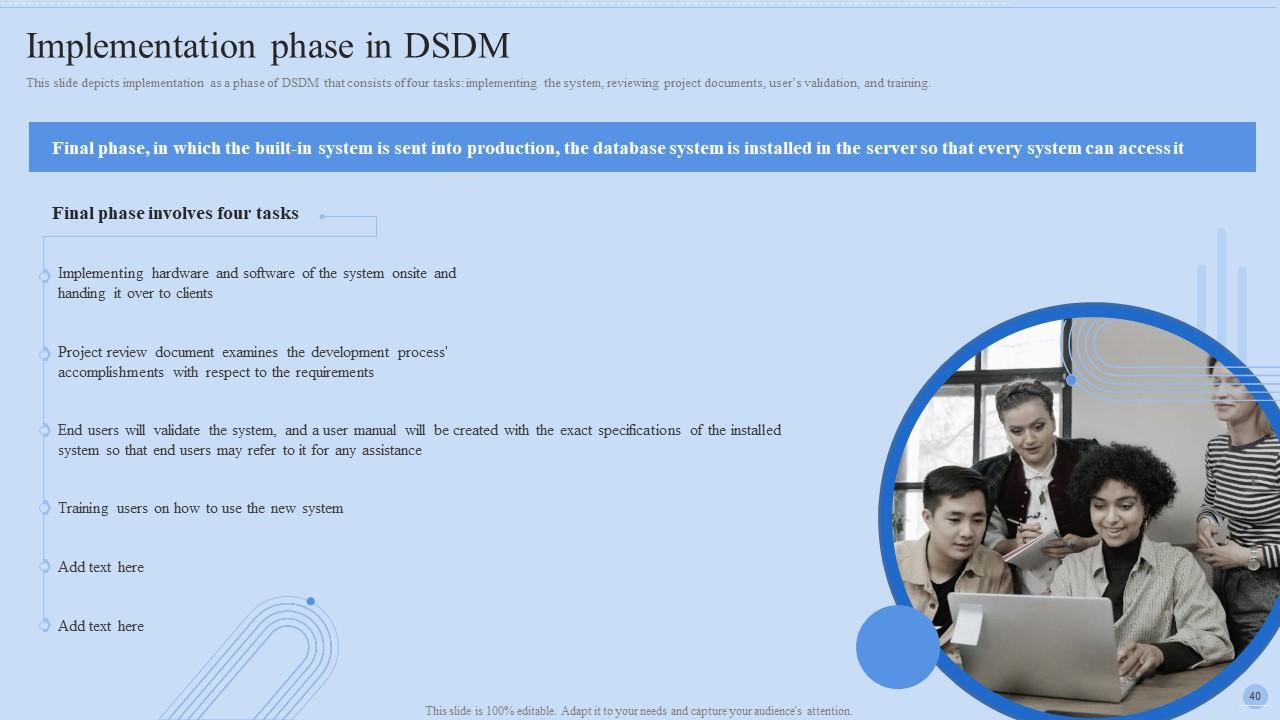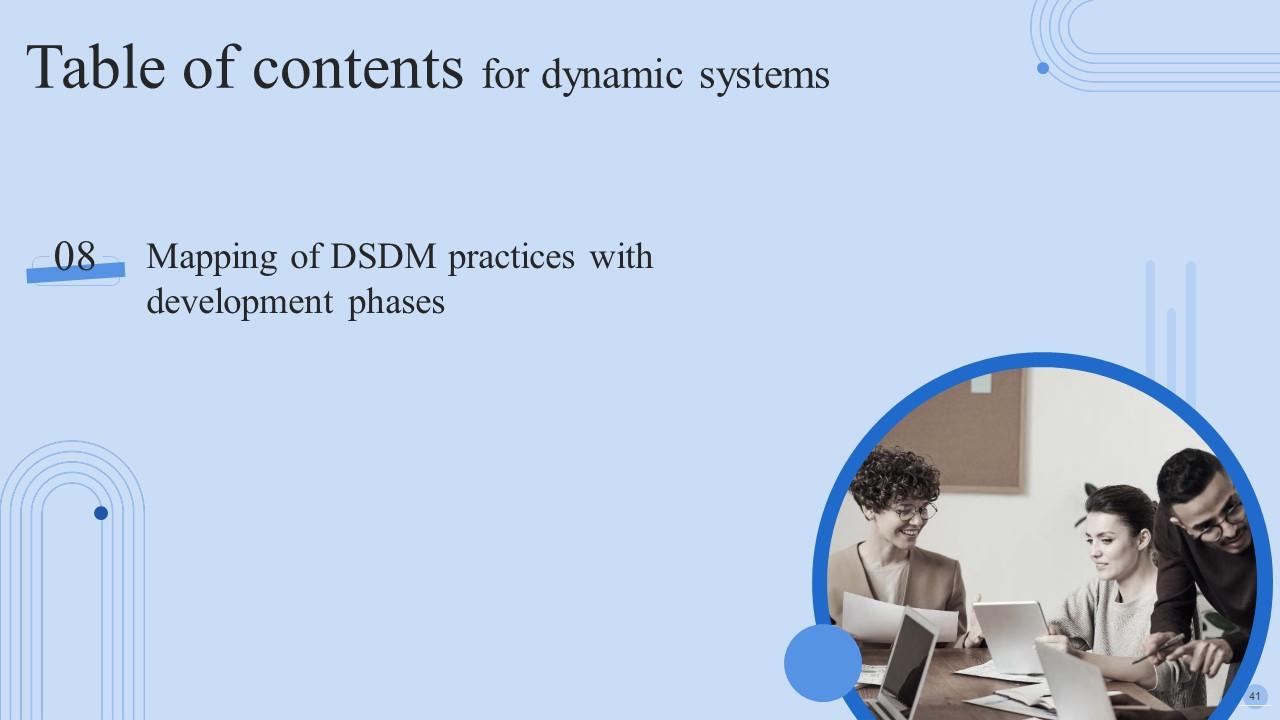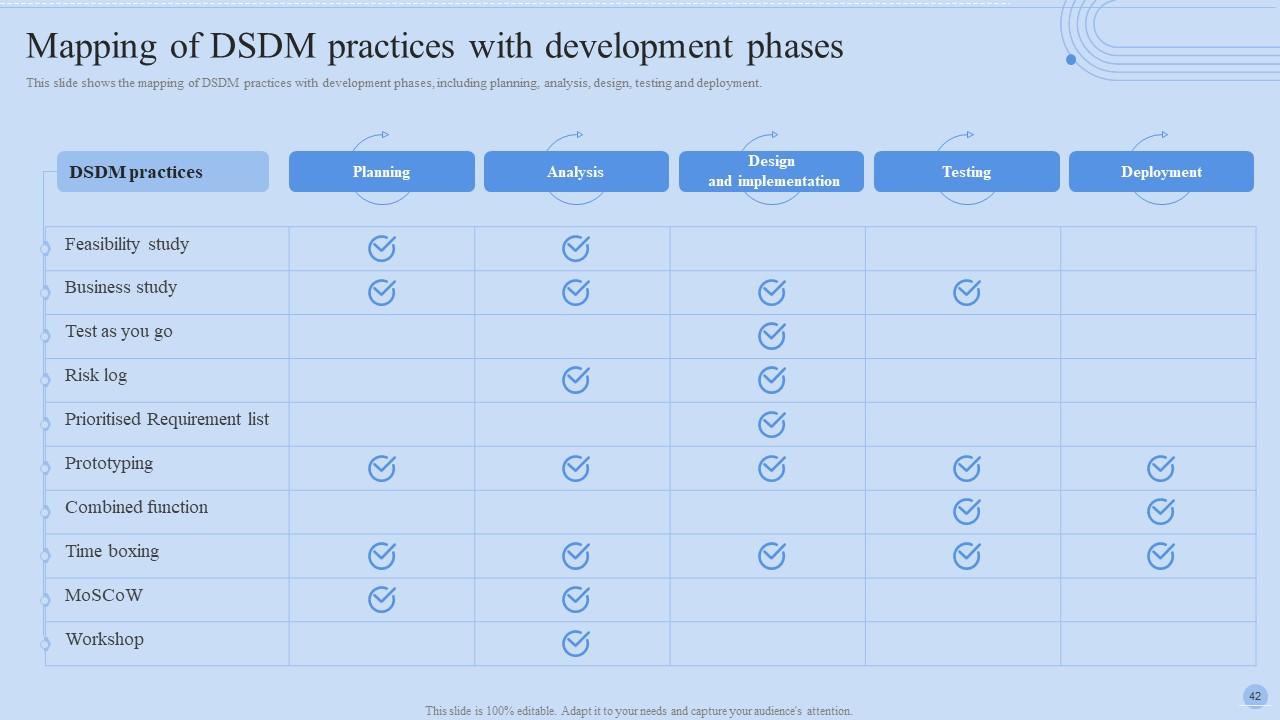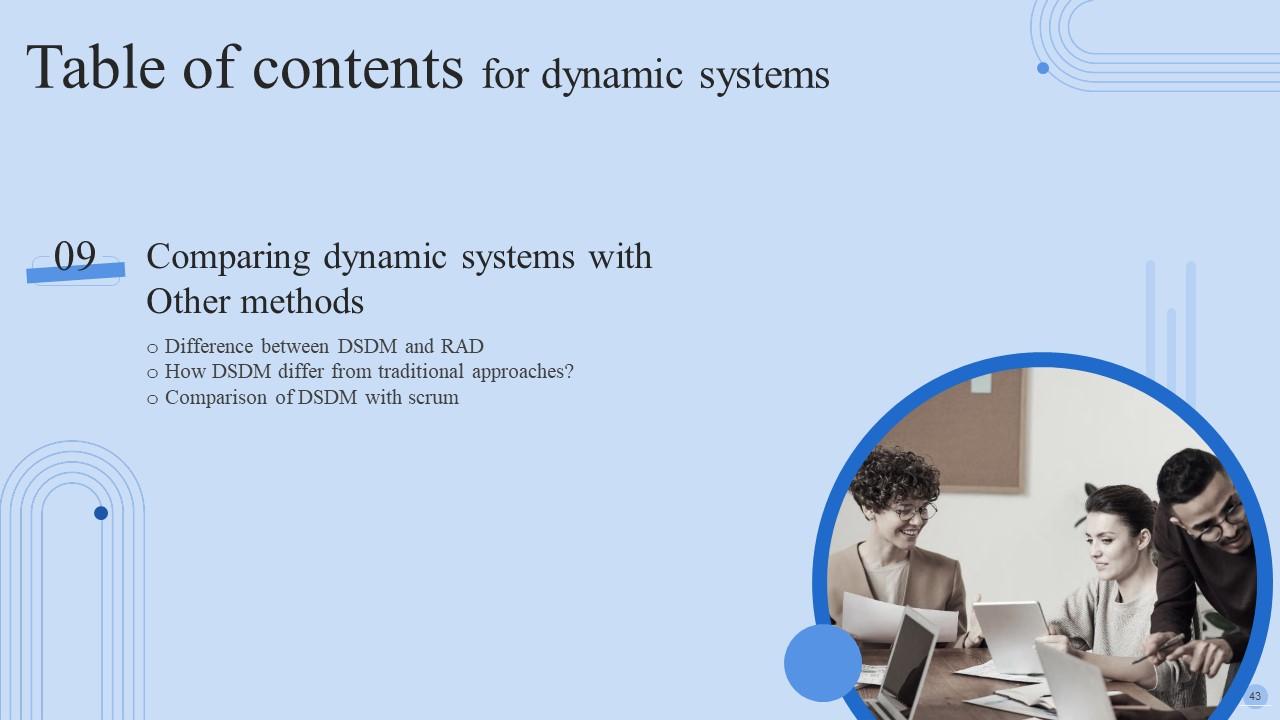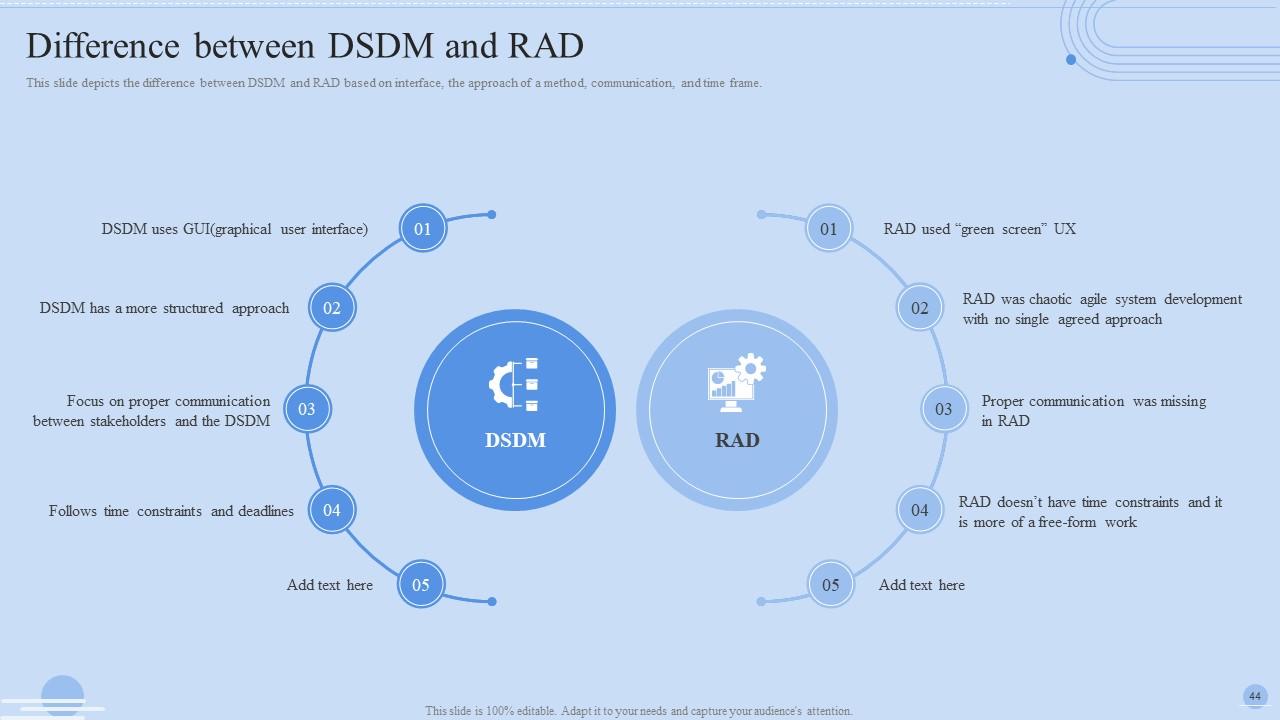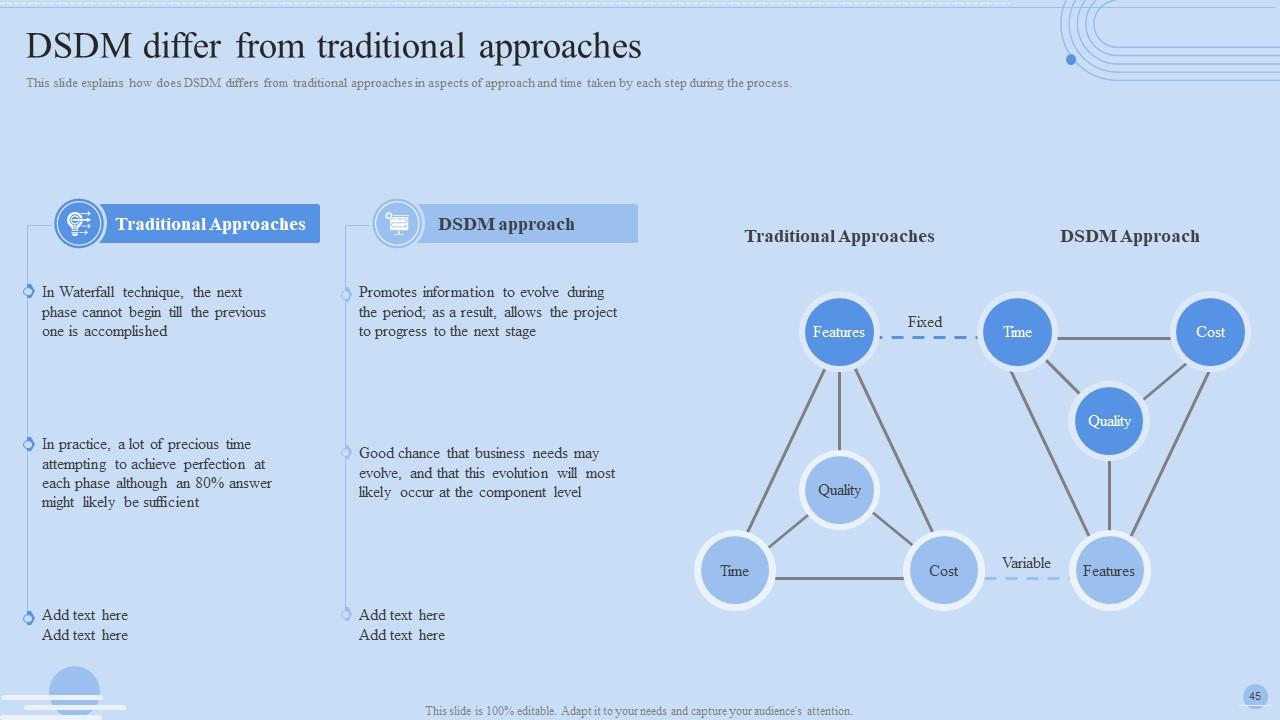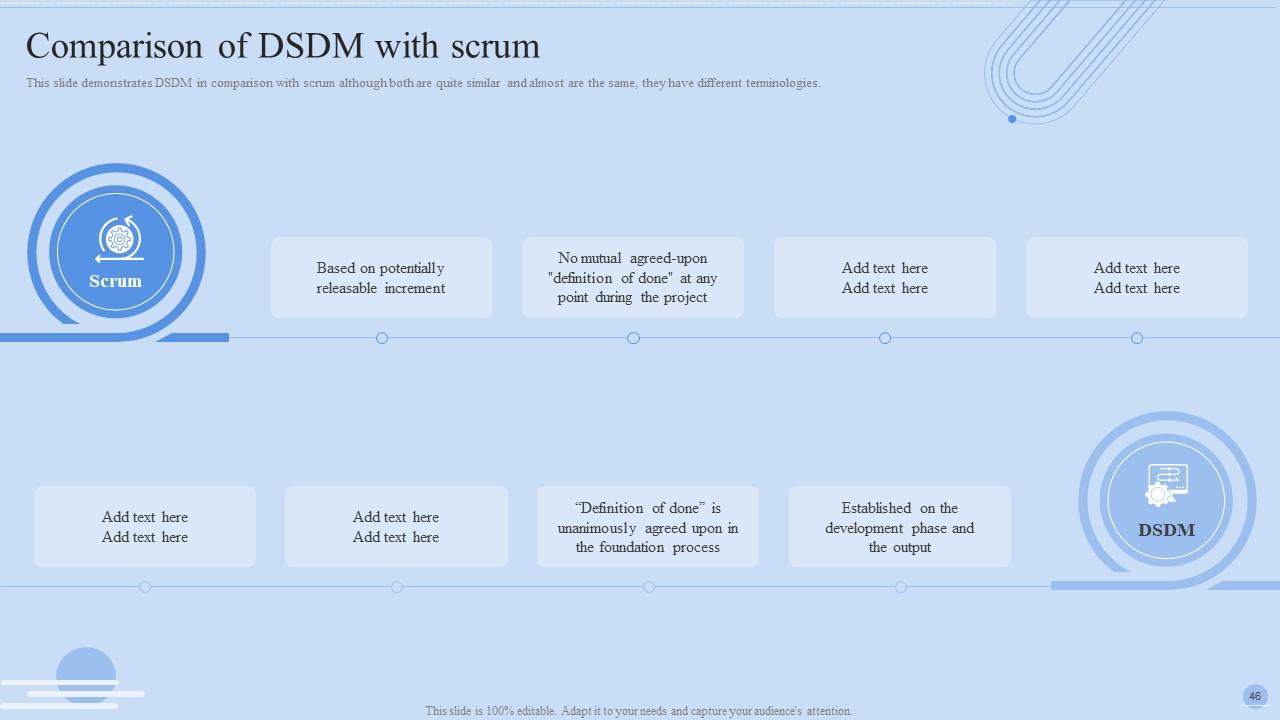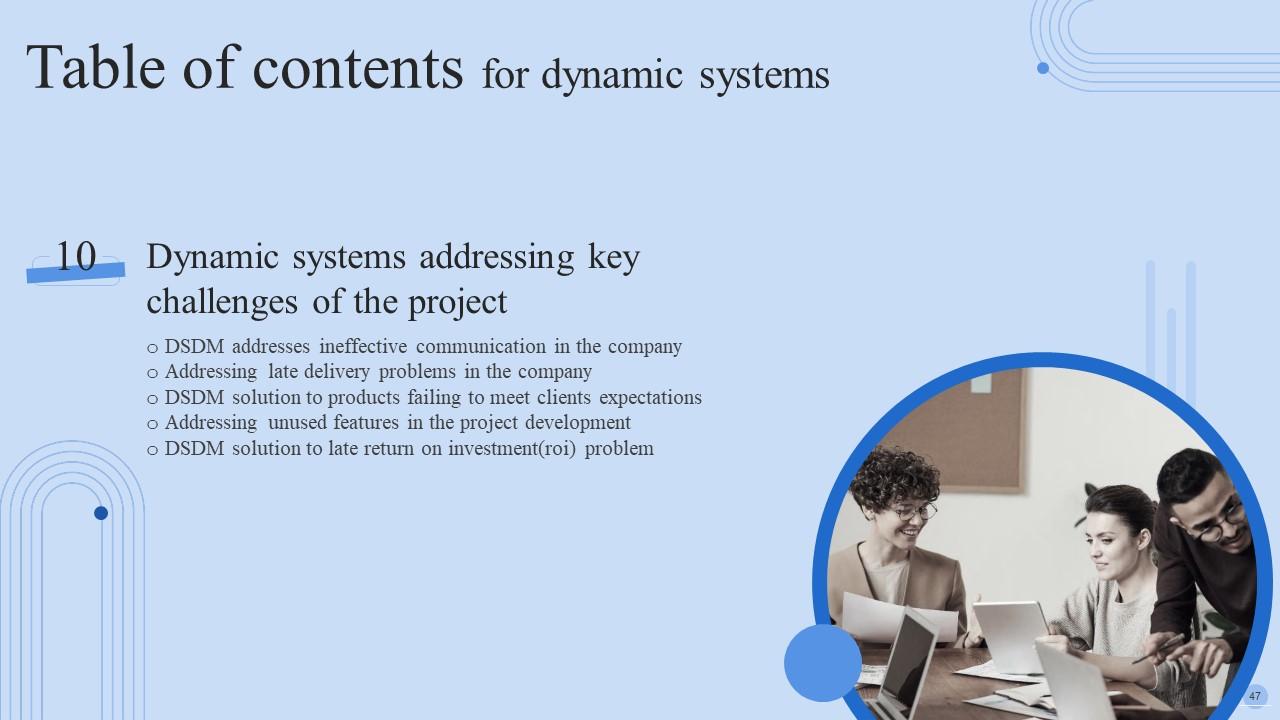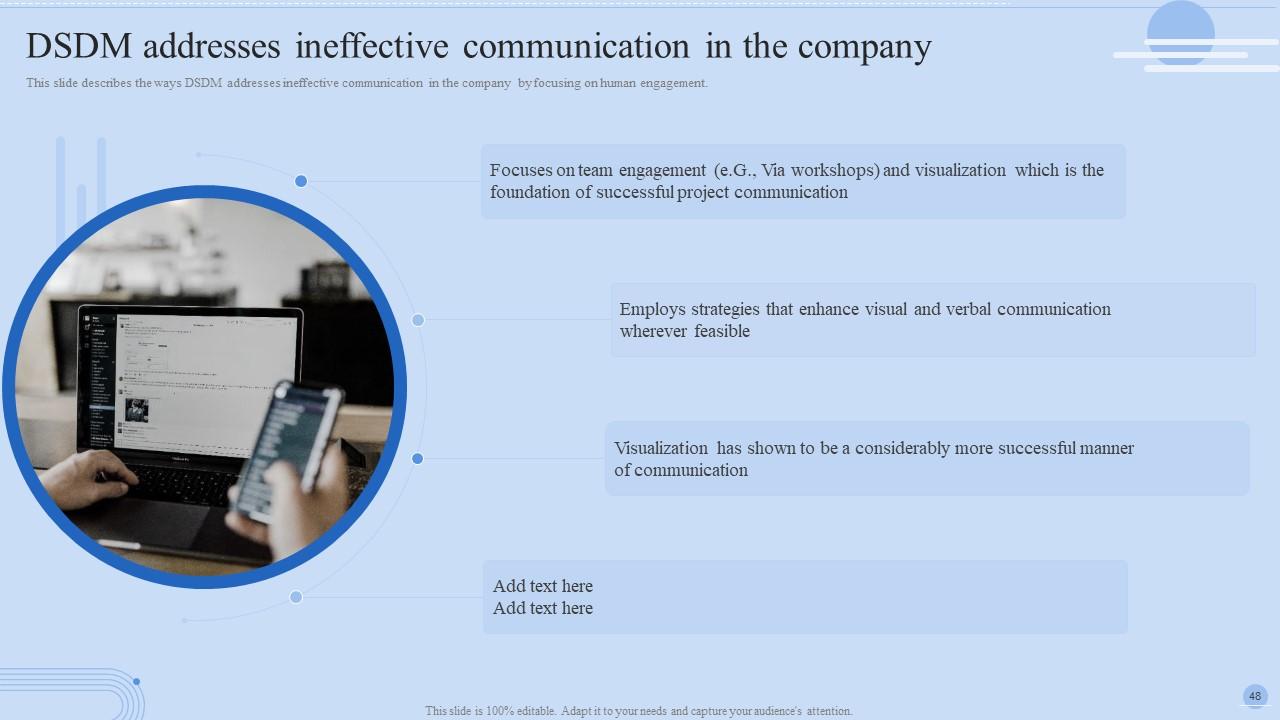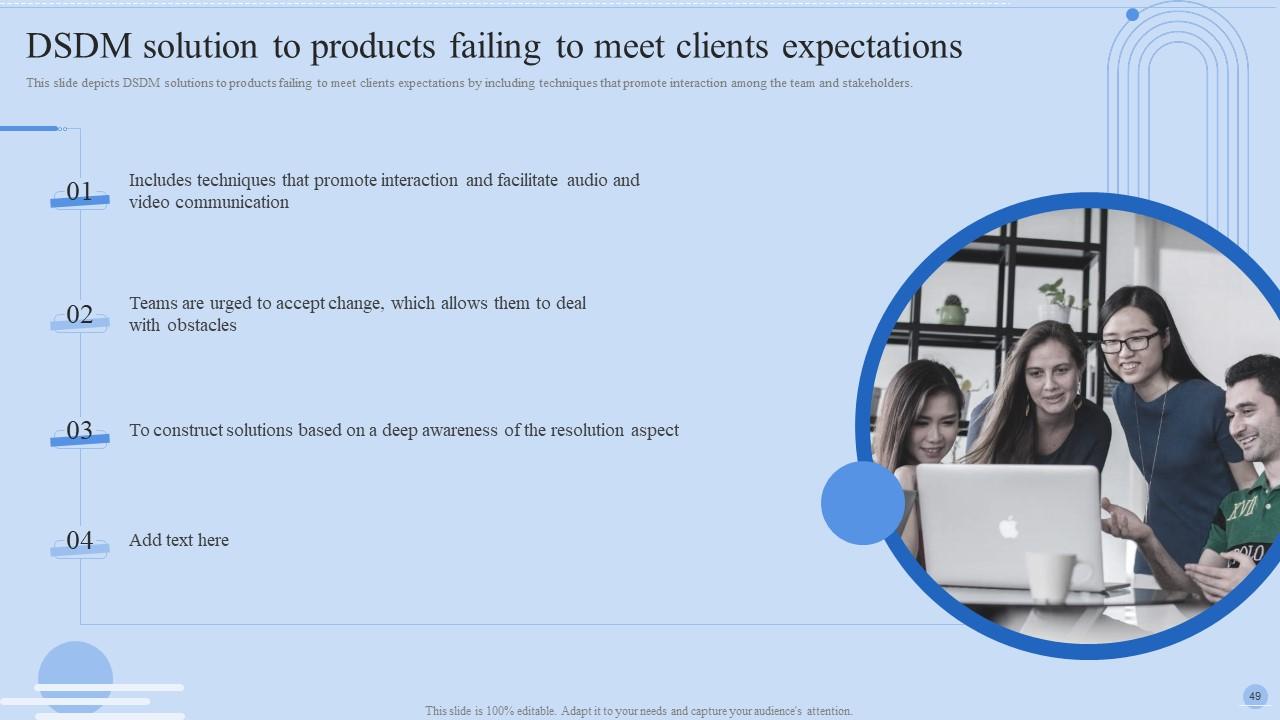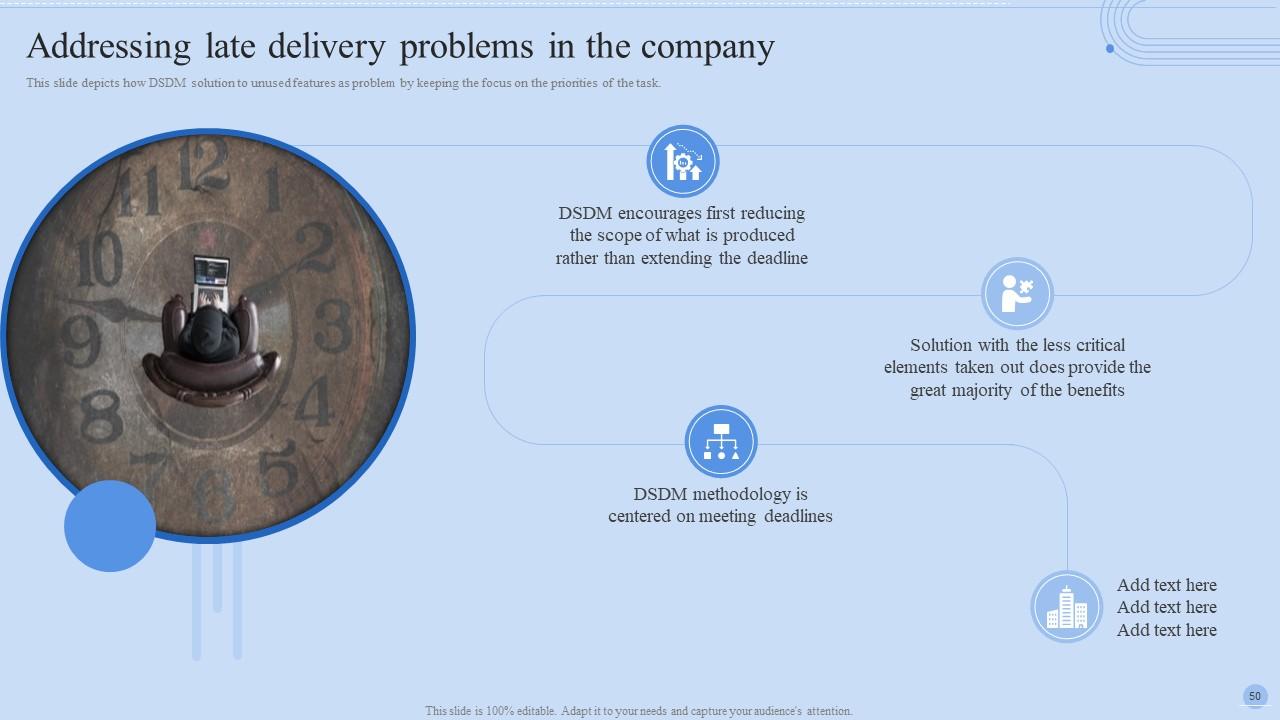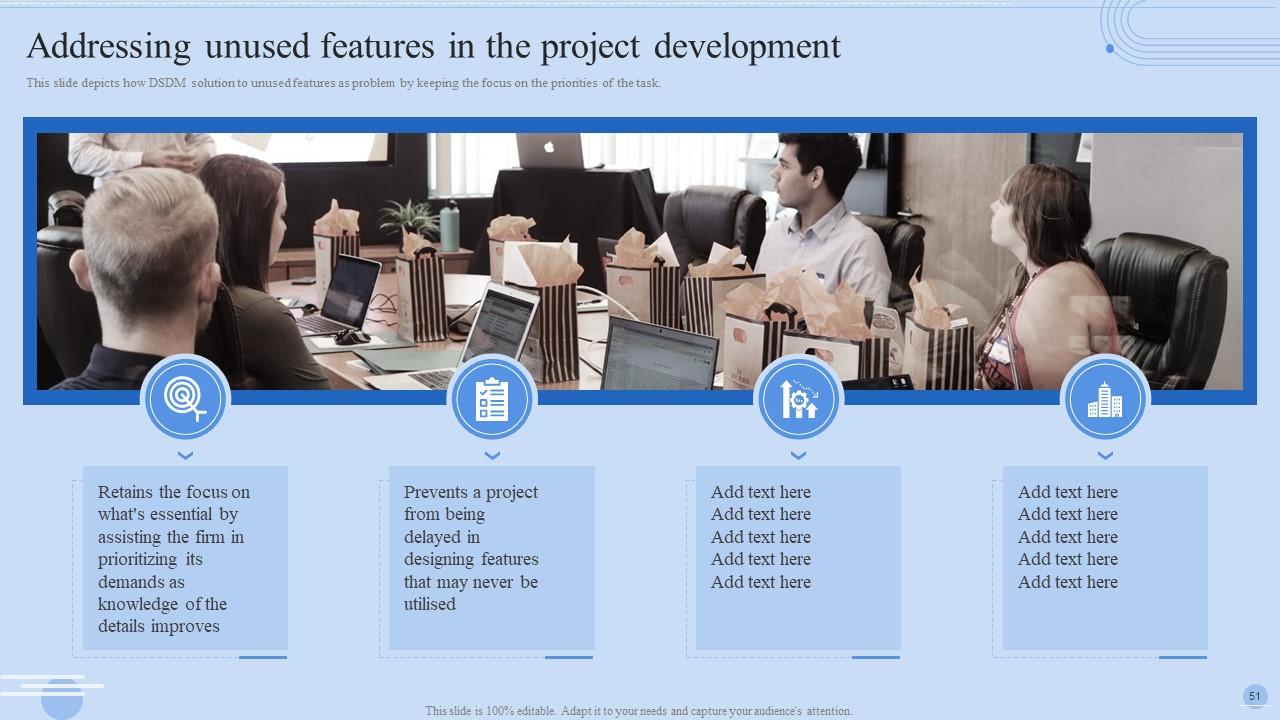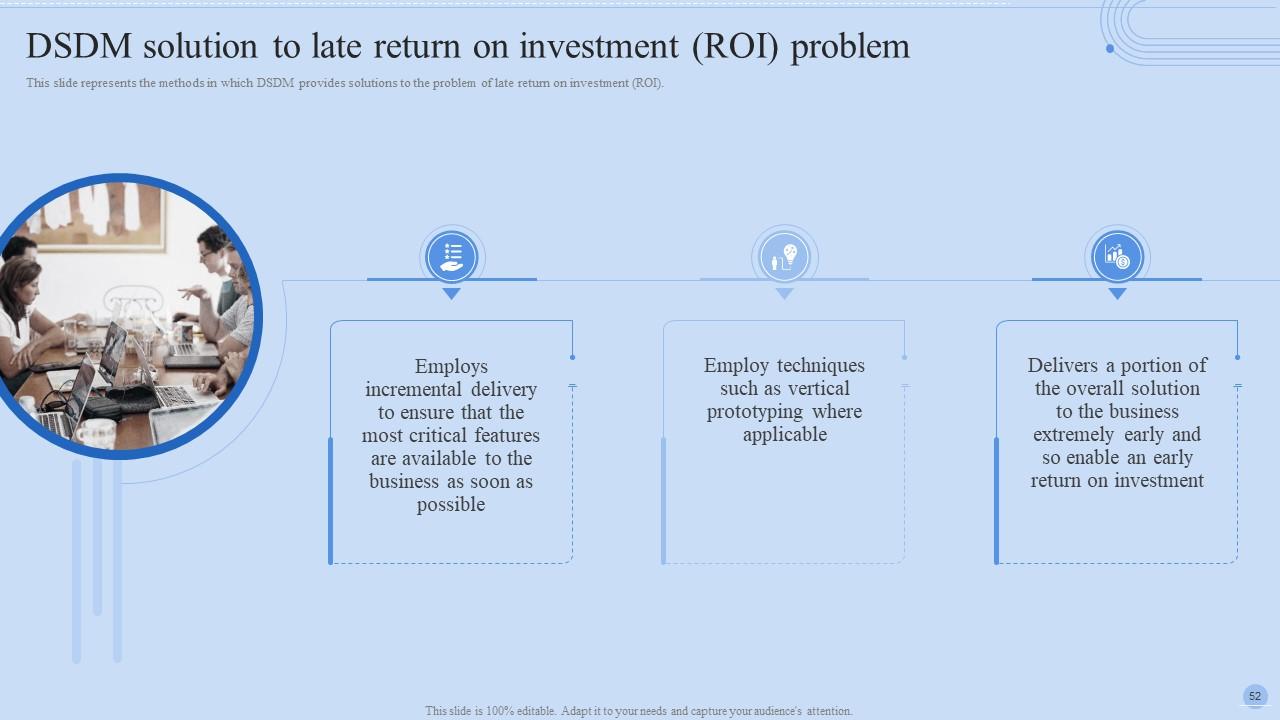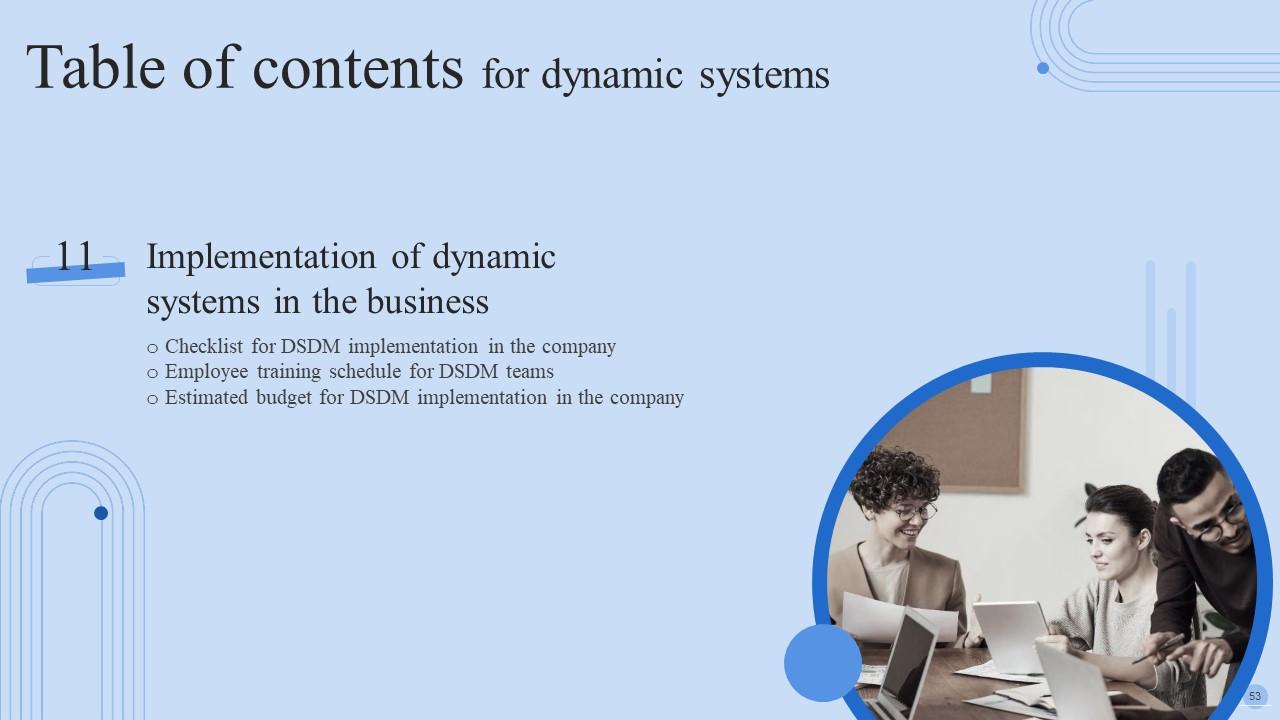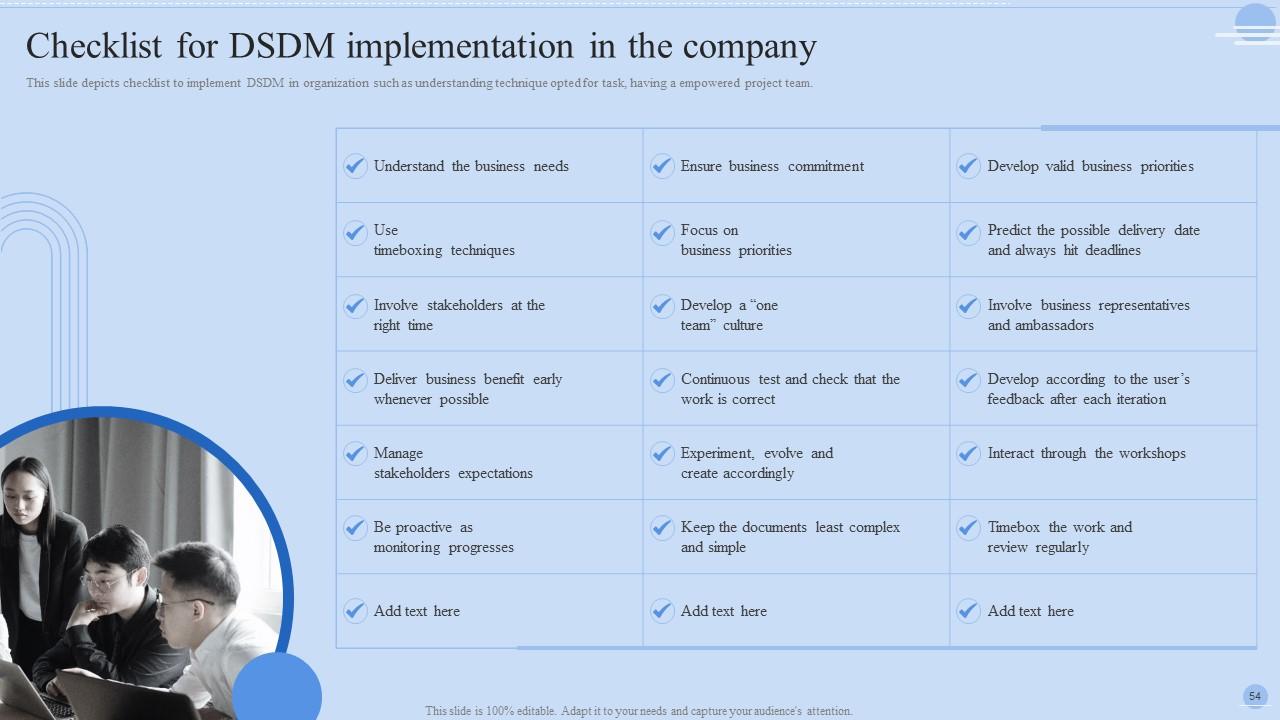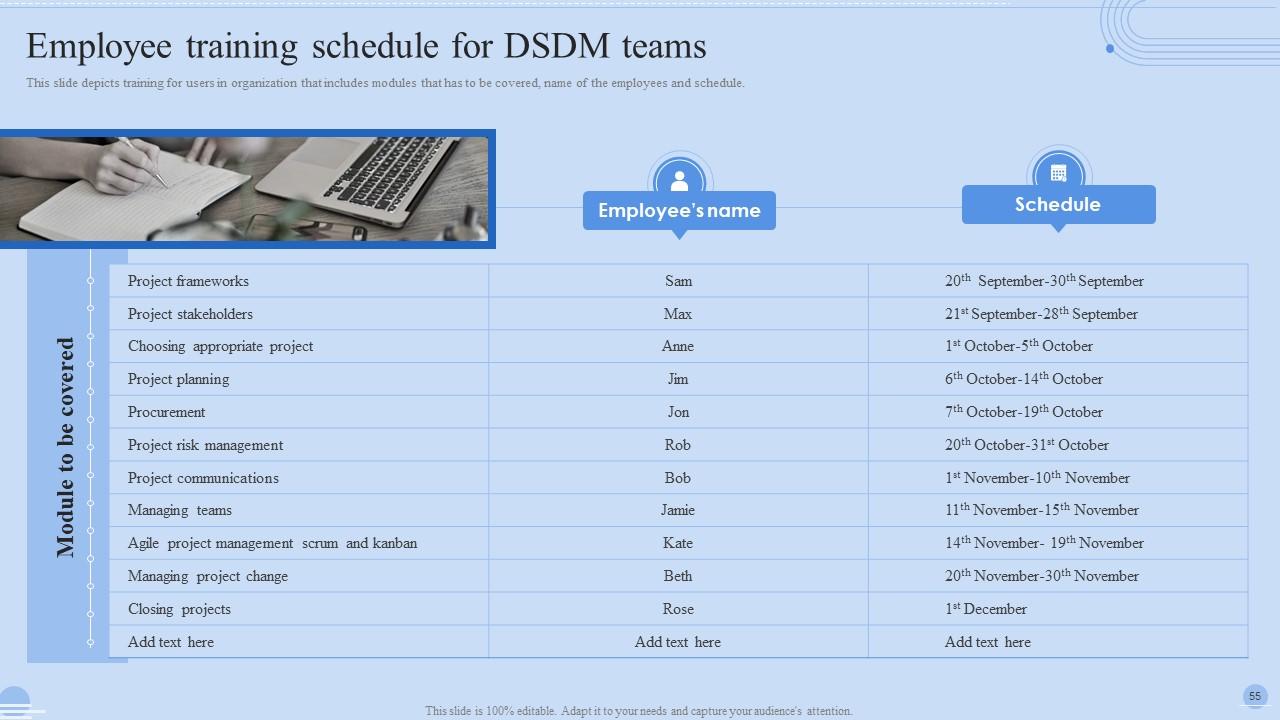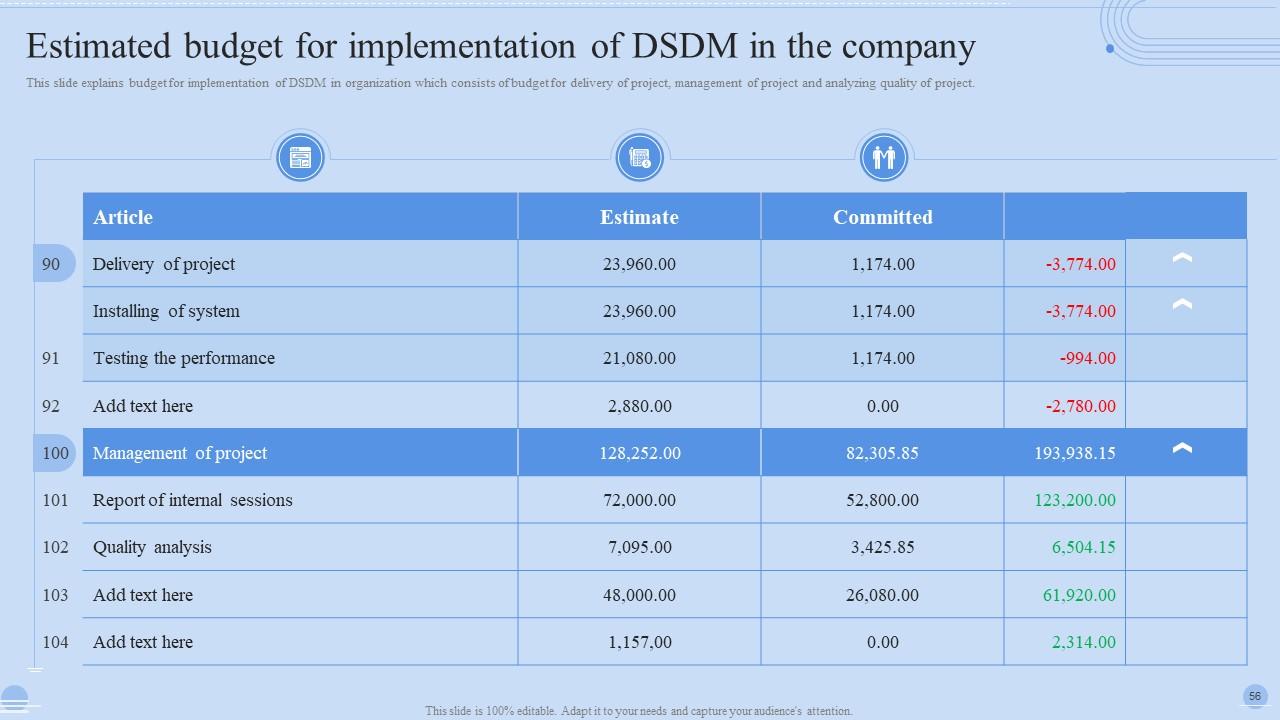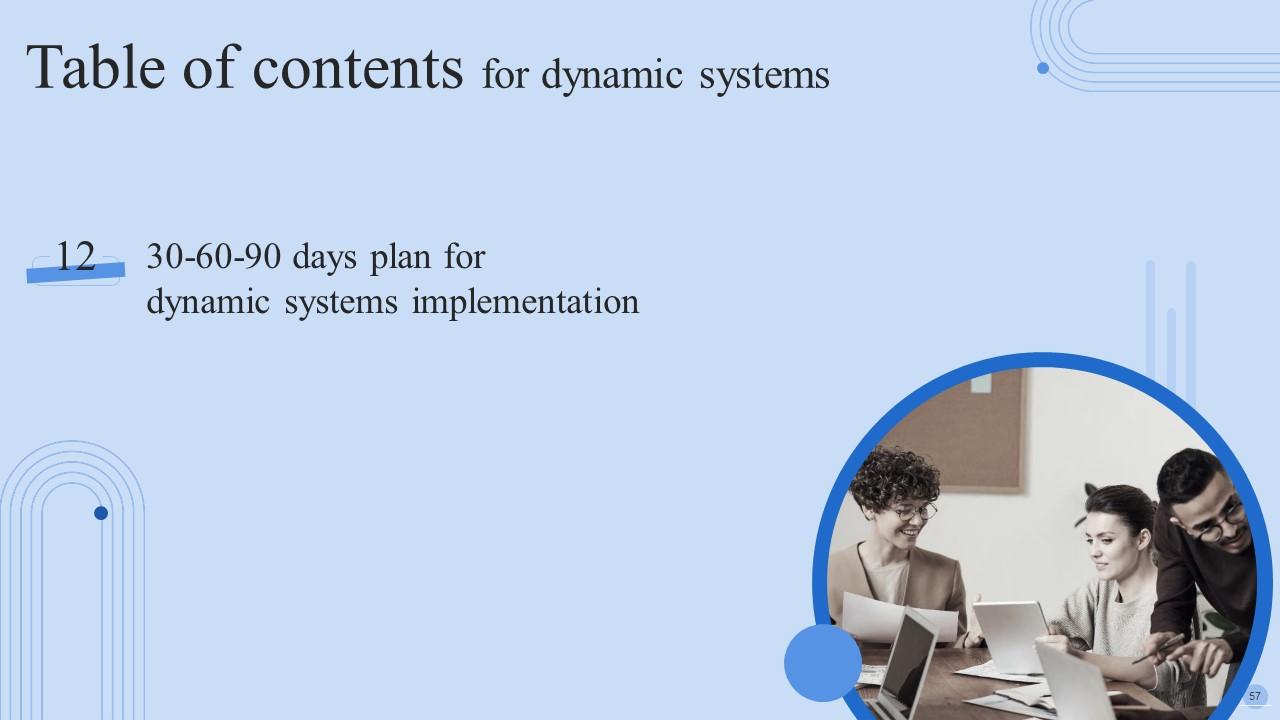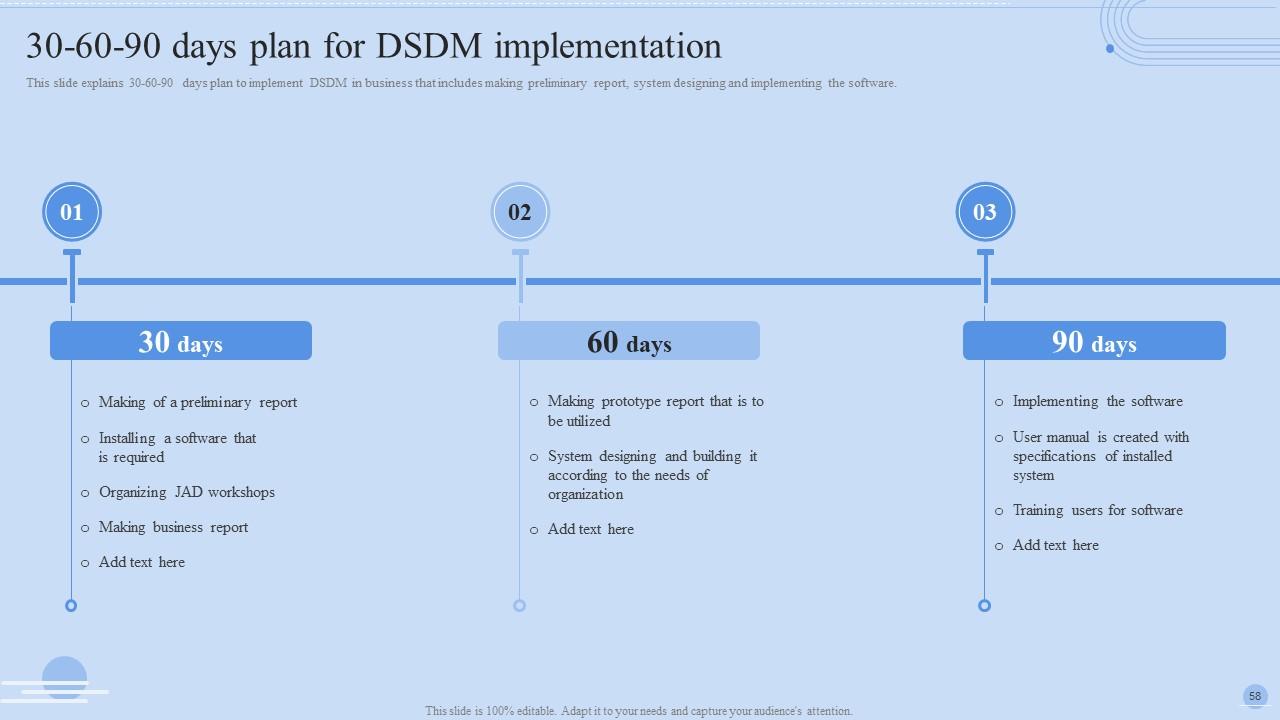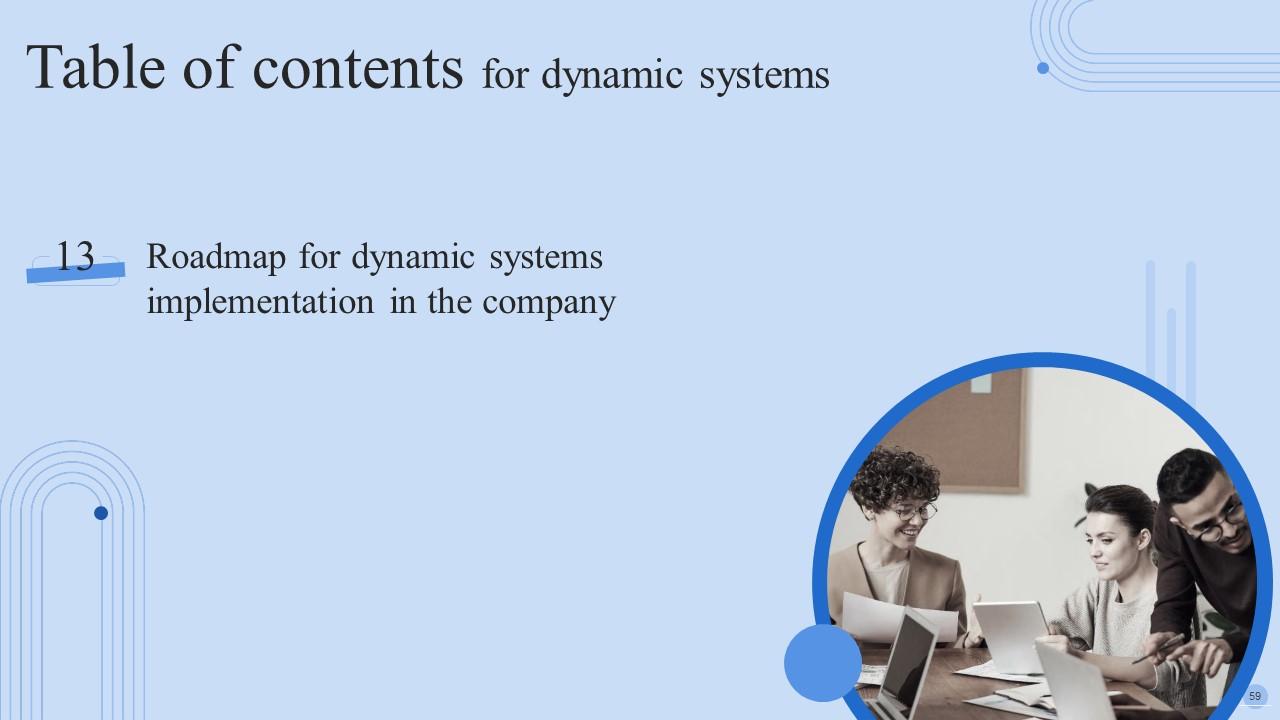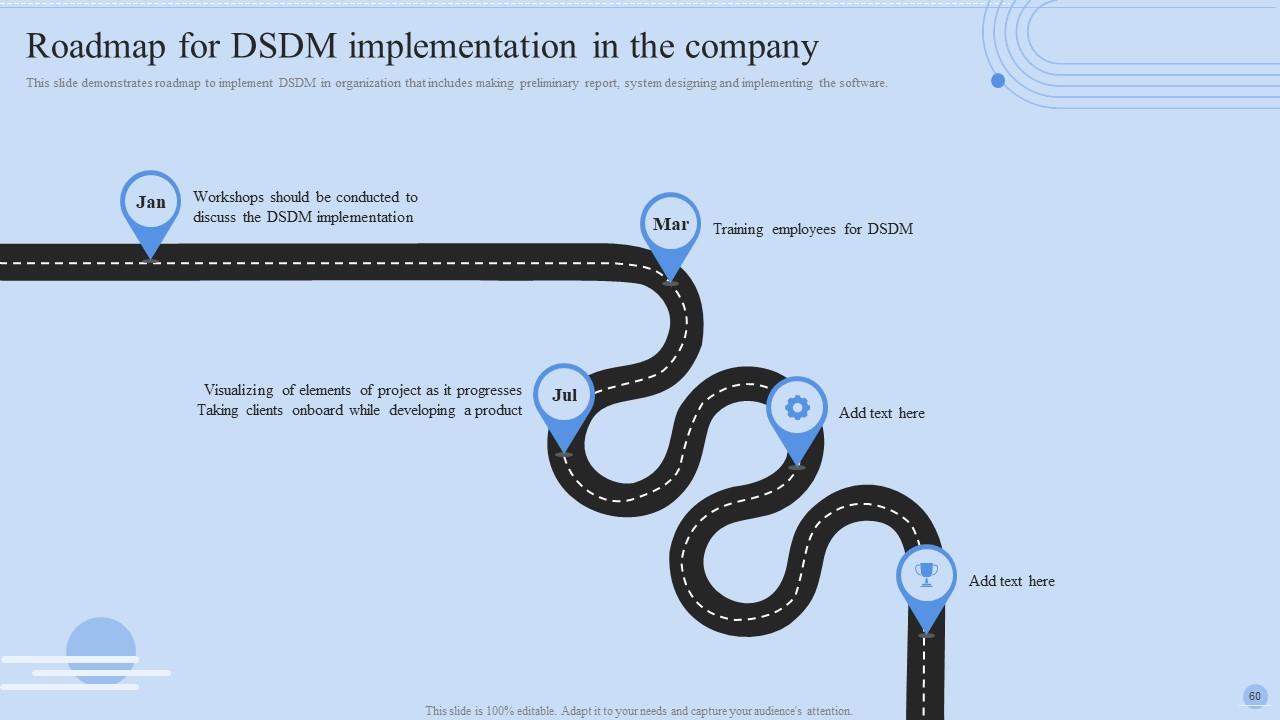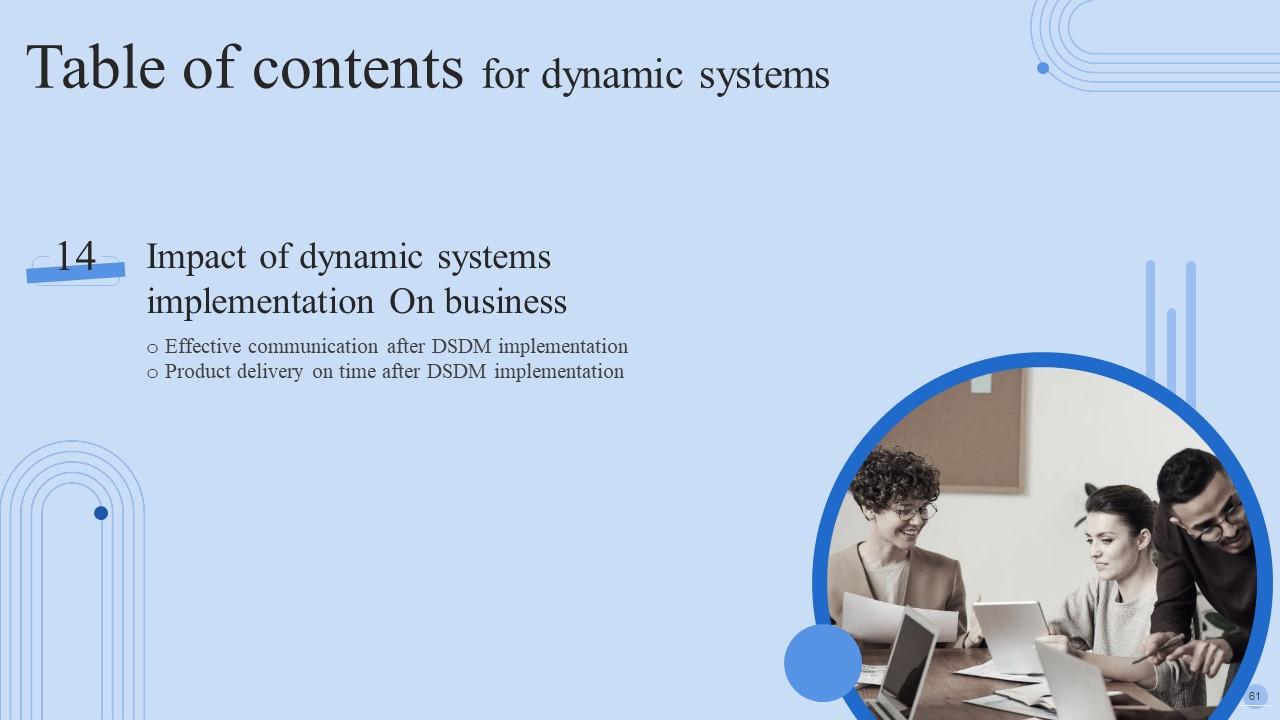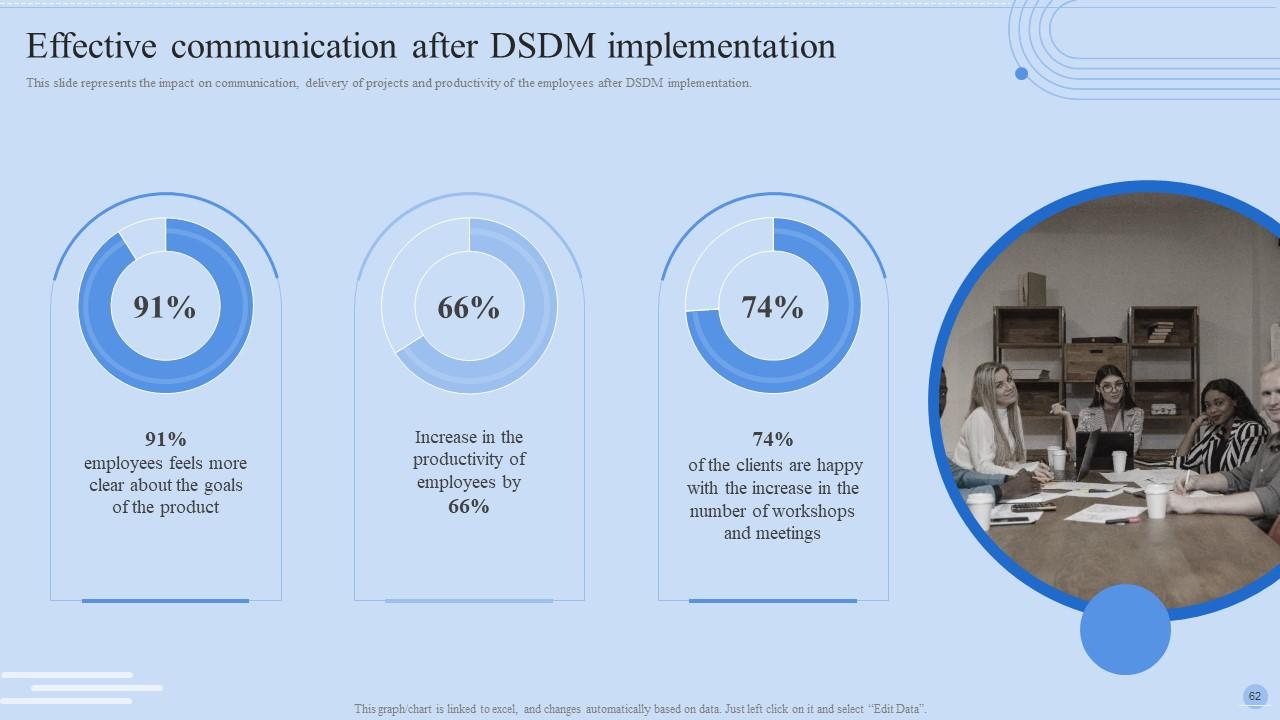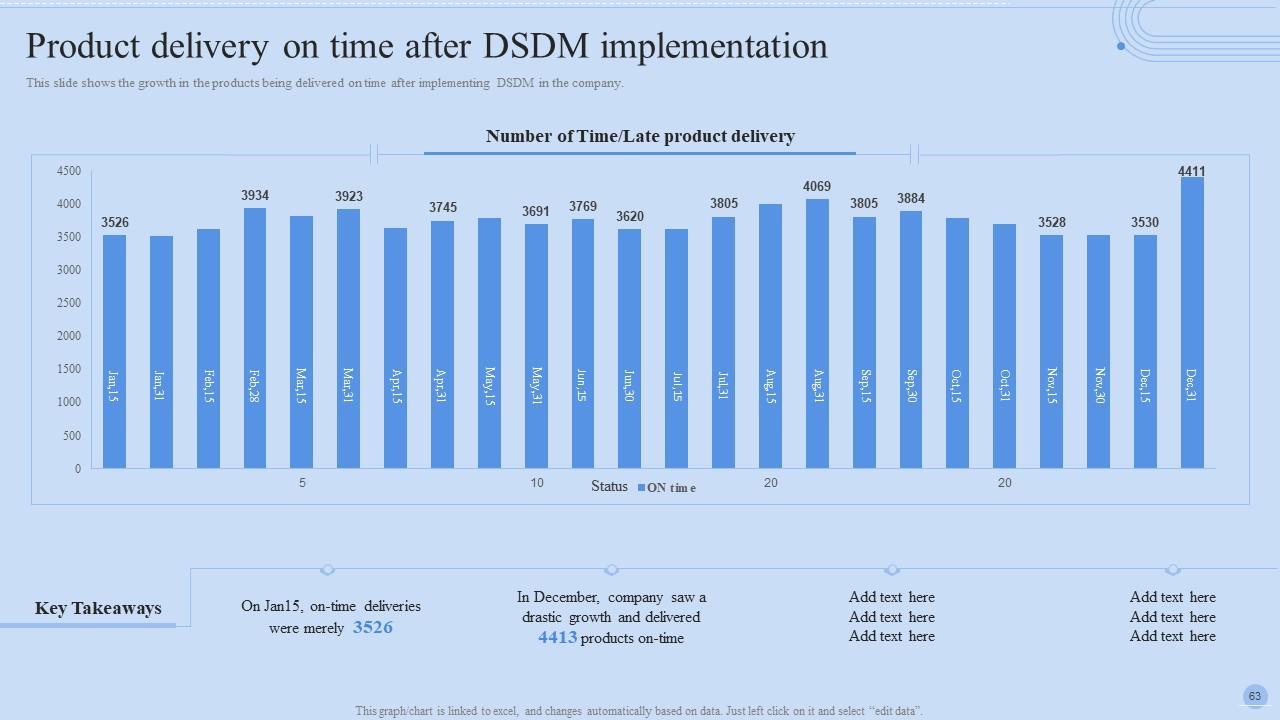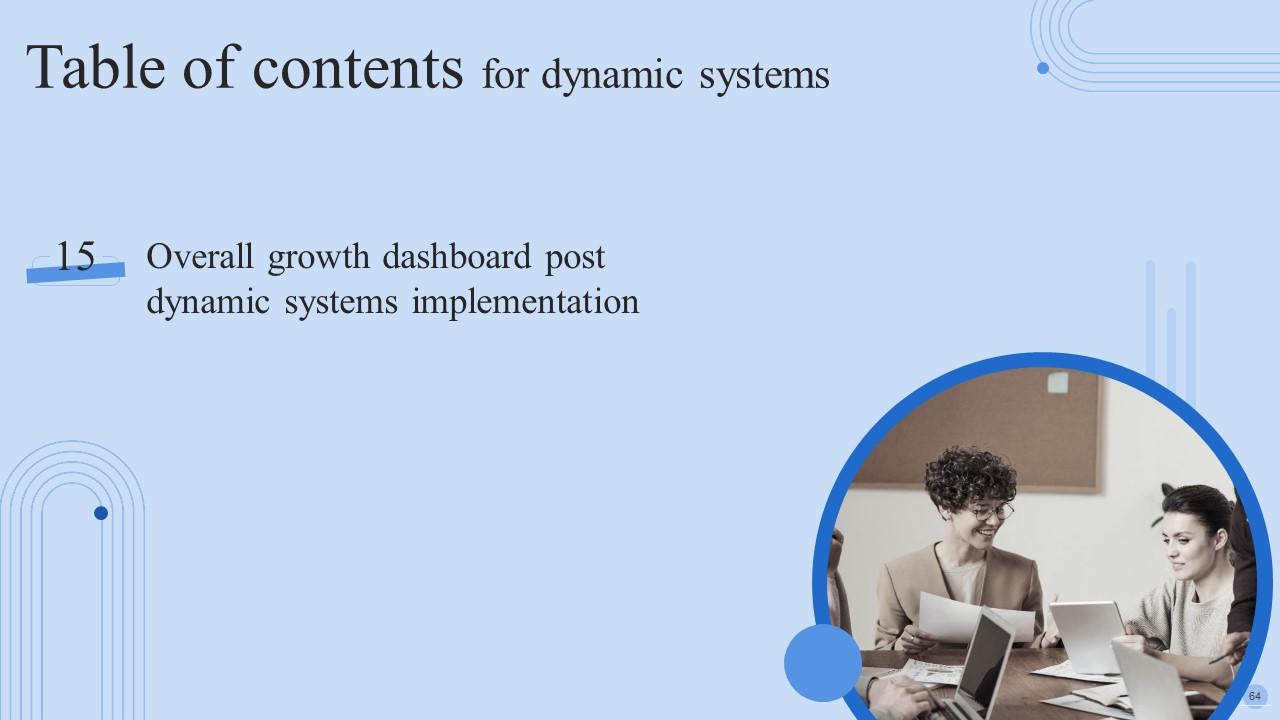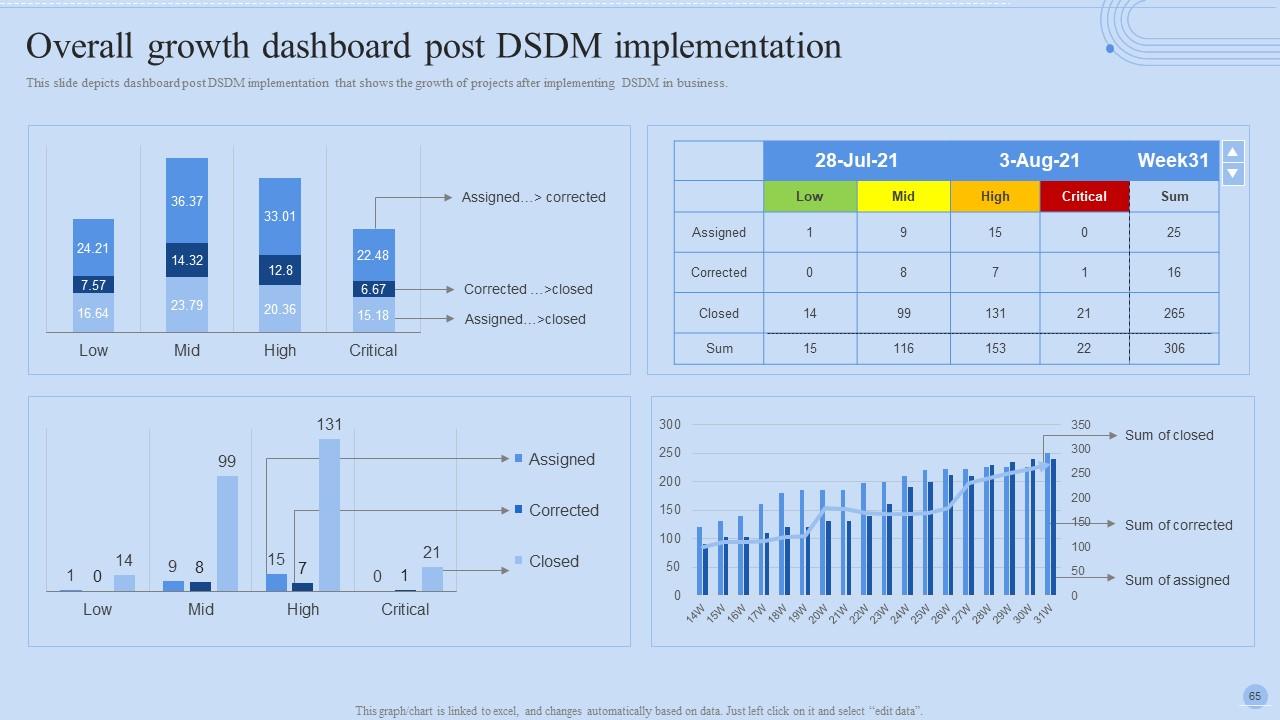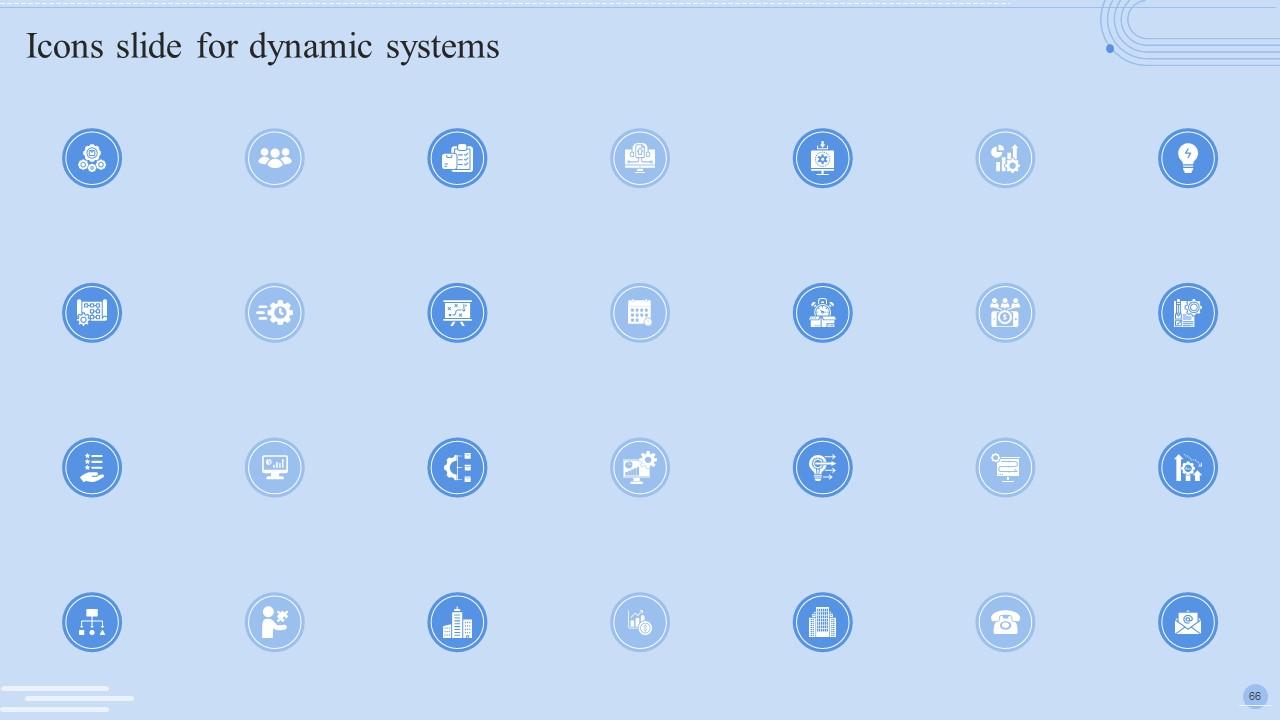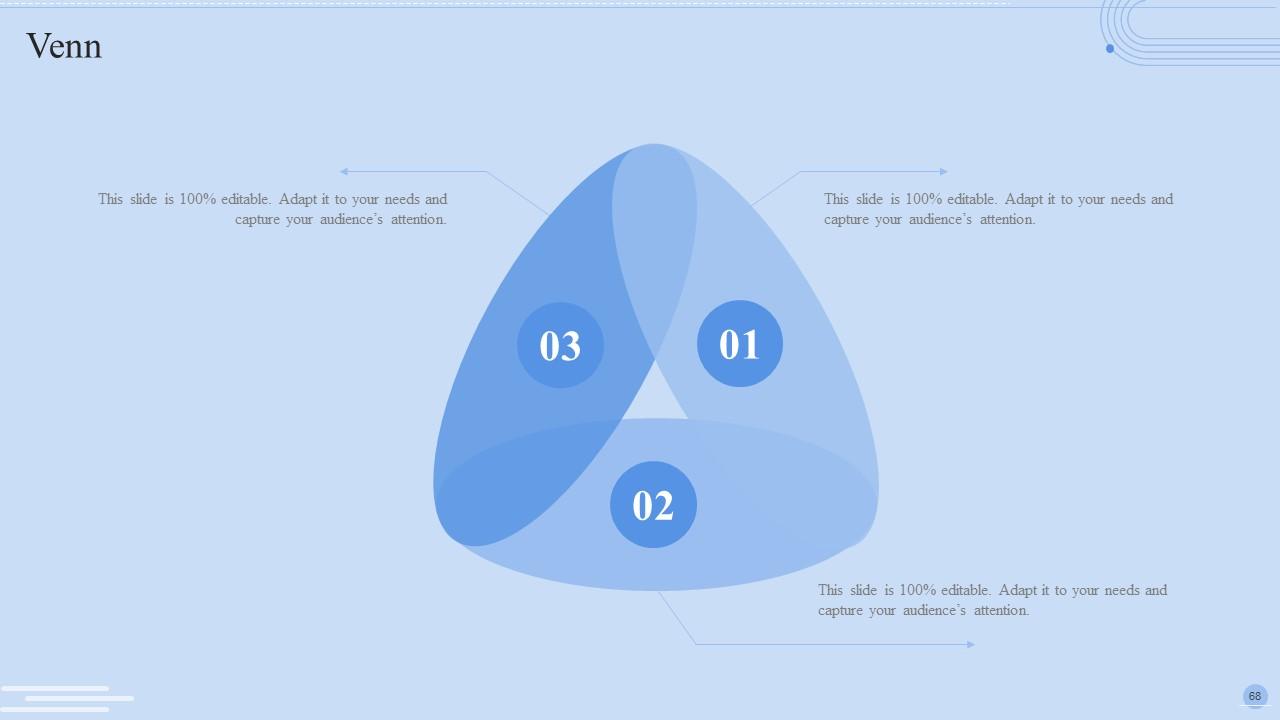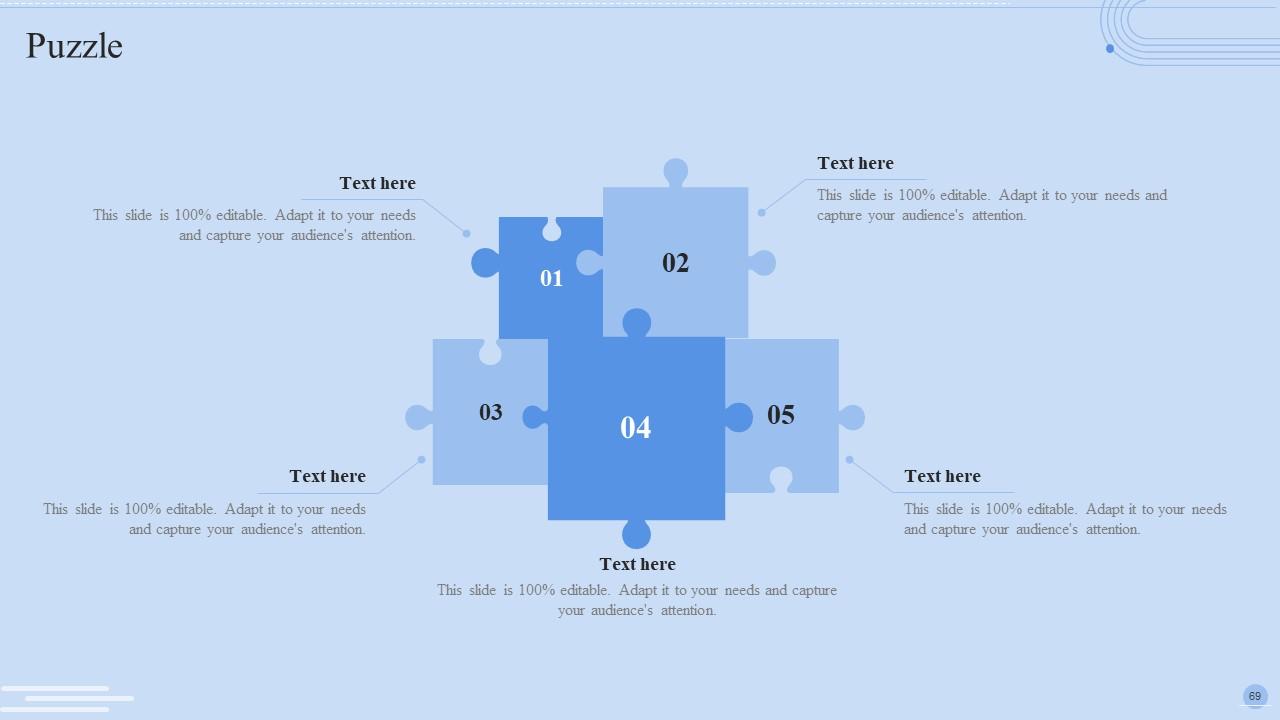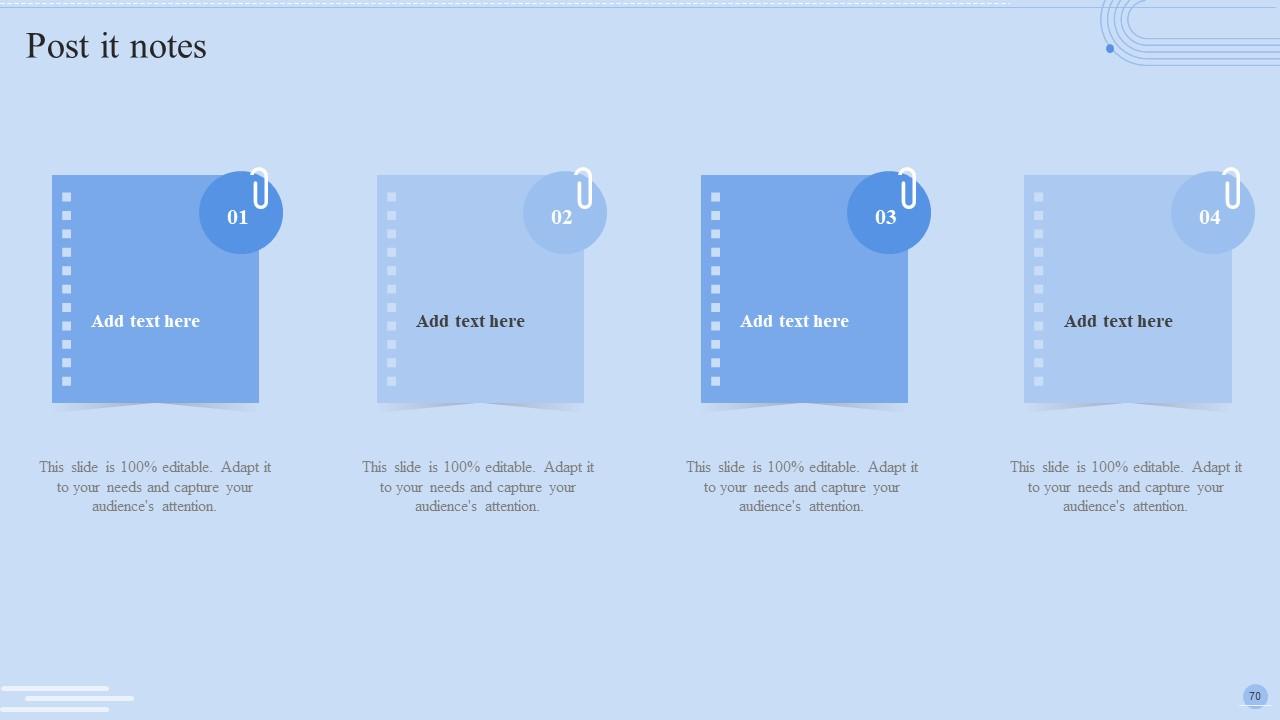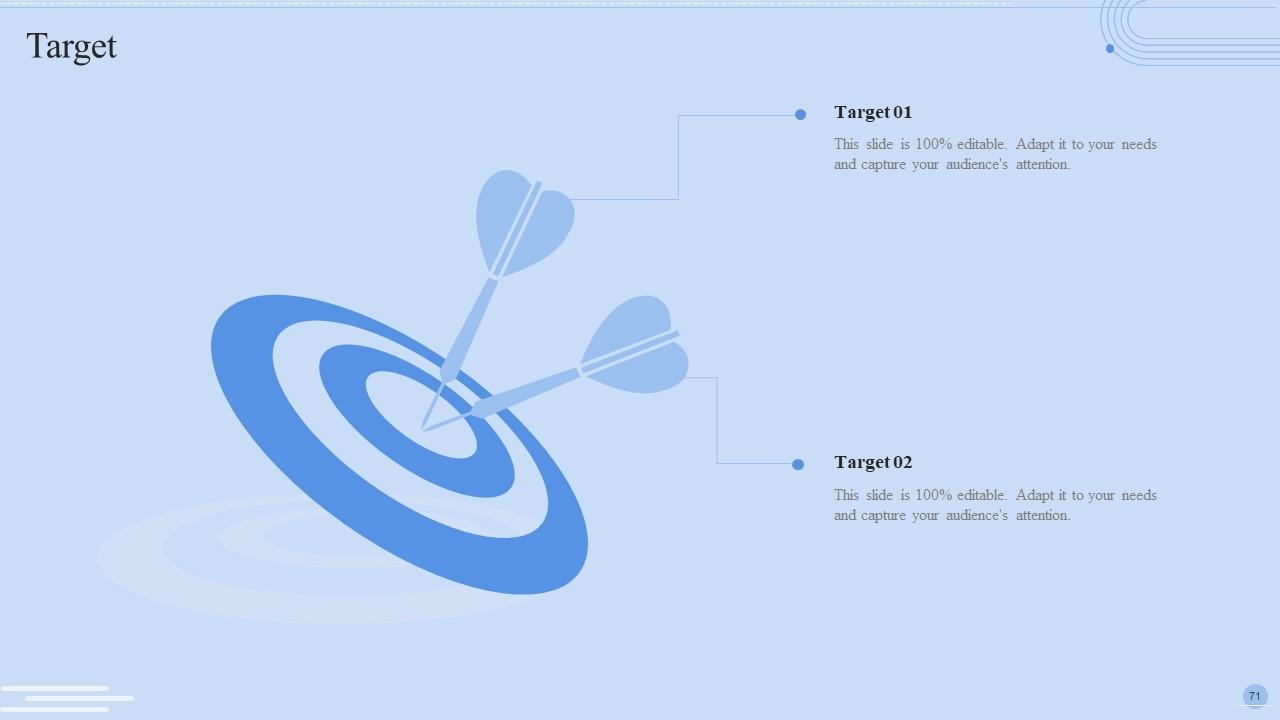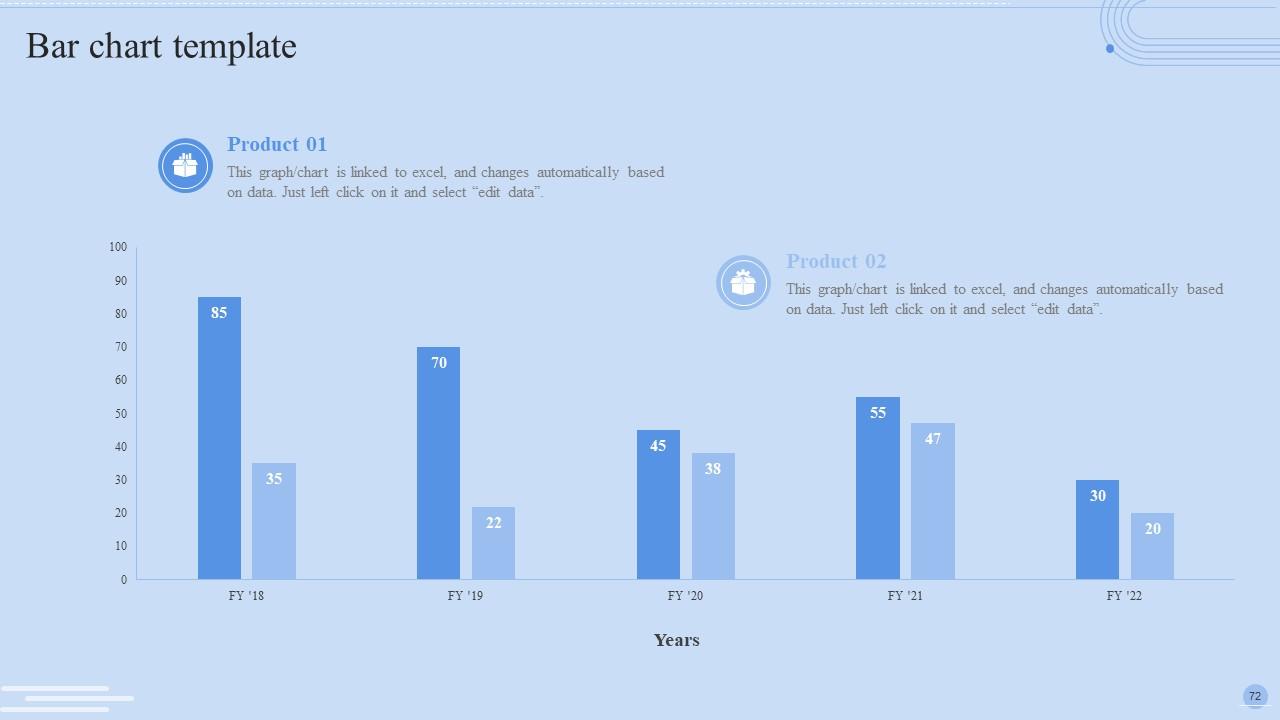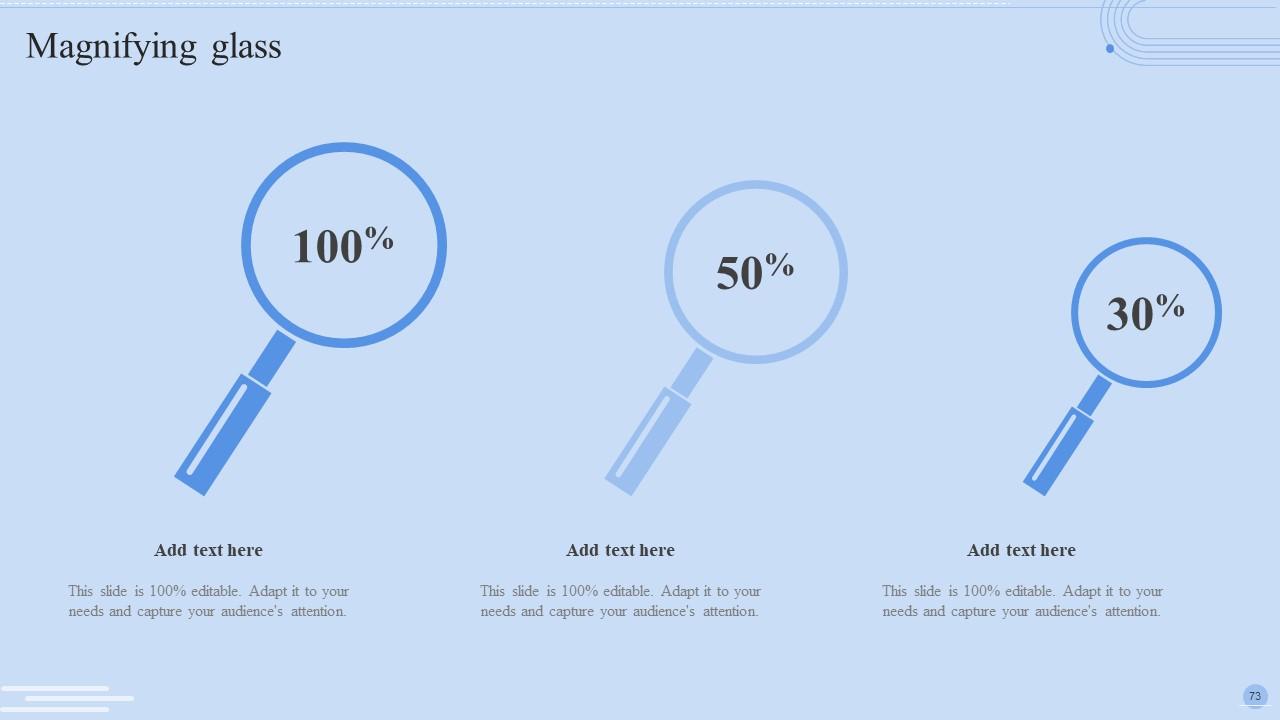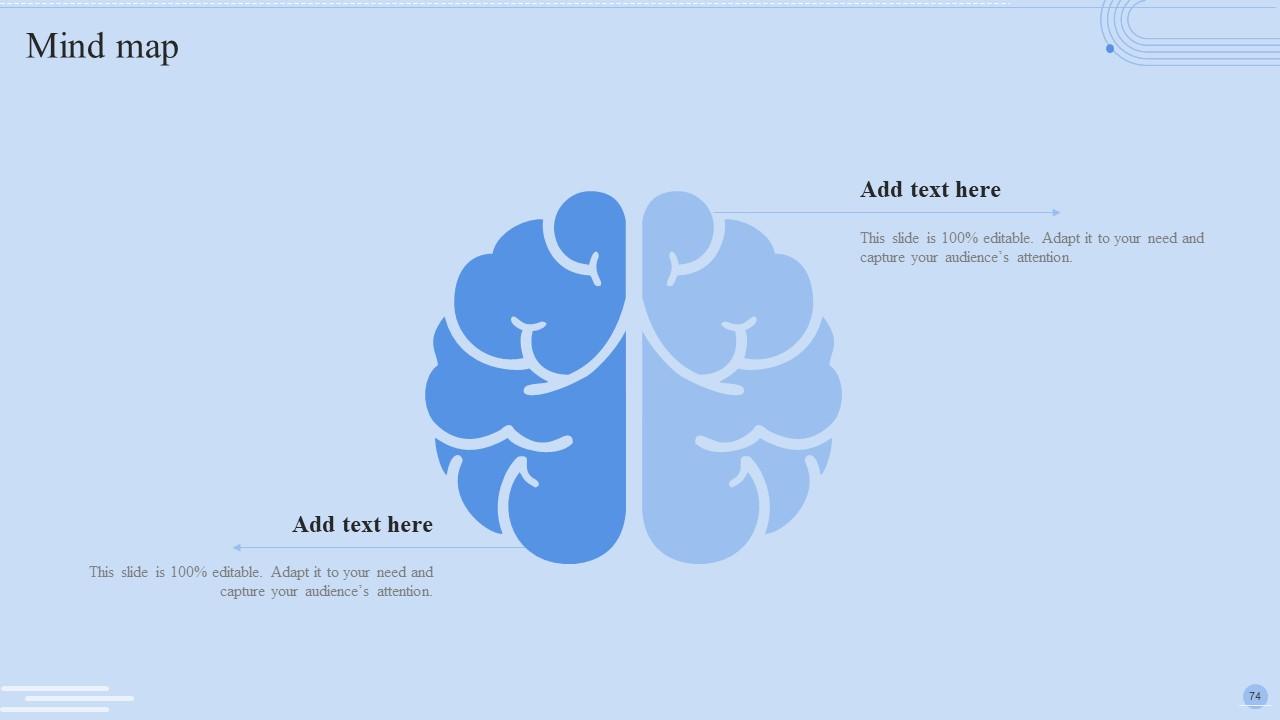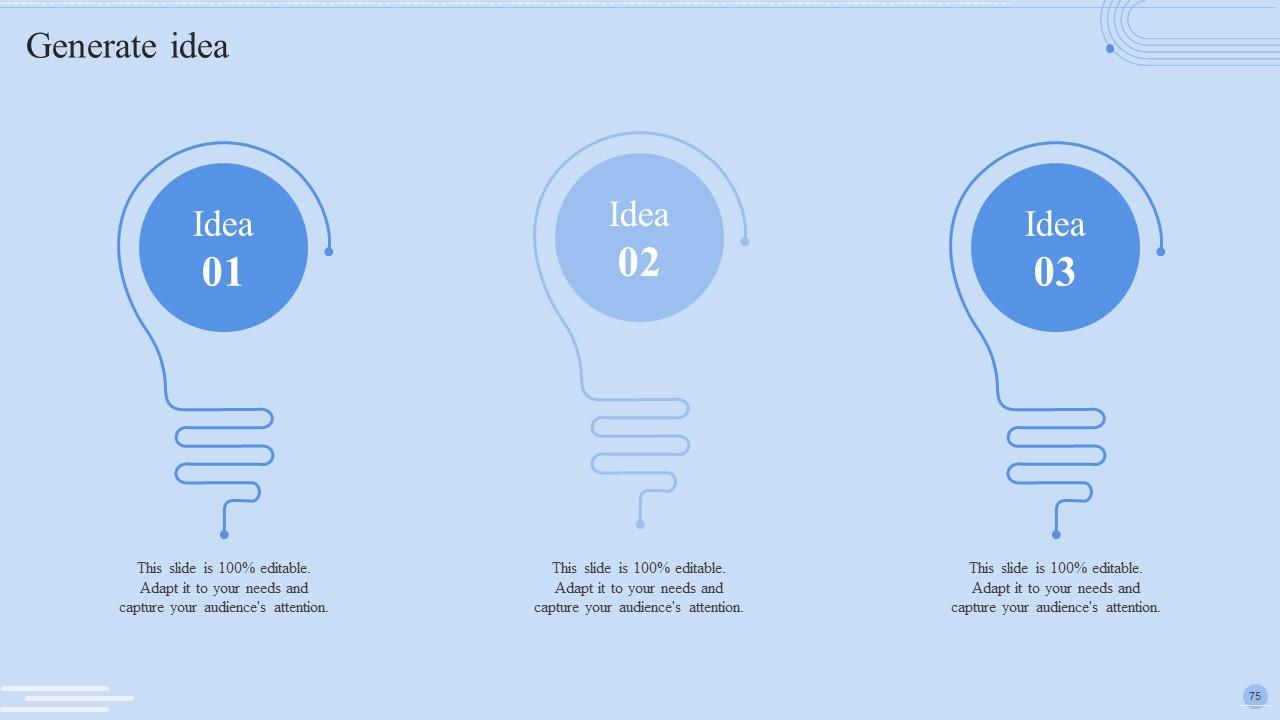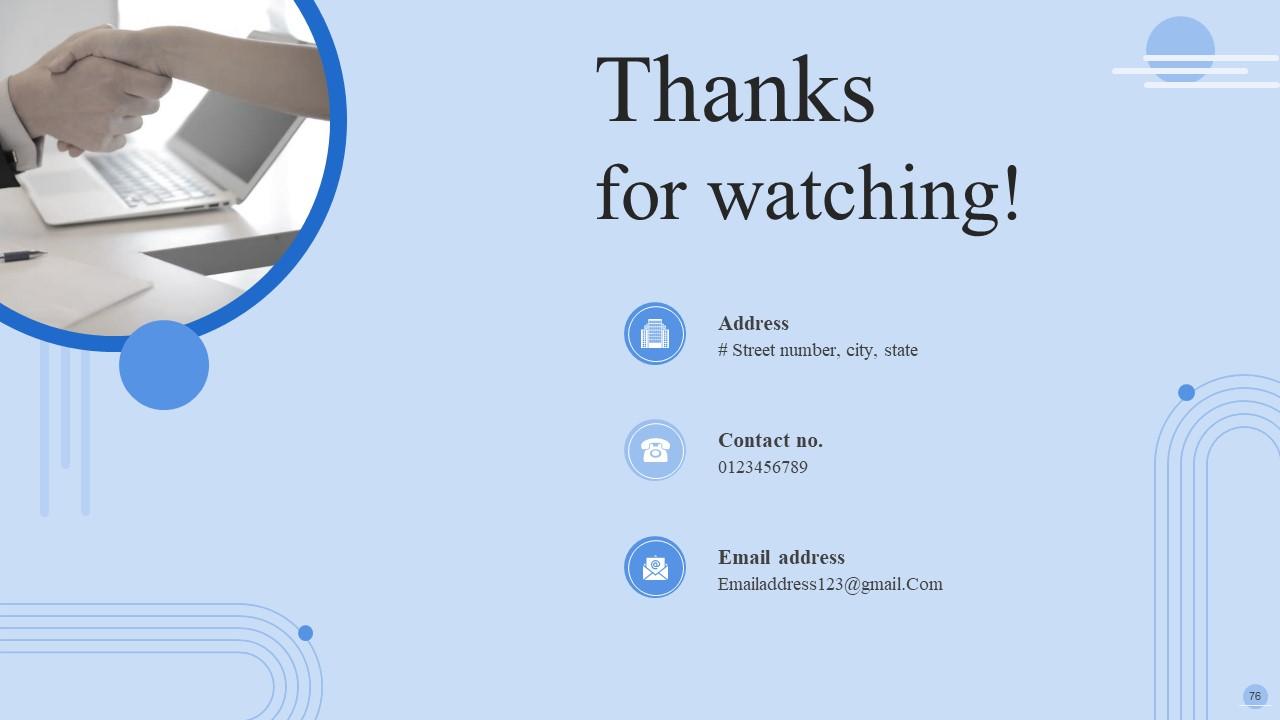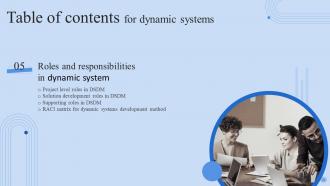Dynamic Systems Powerpoint Presentation Slides
The dynamic Systems Development Method is an incremental coding approach in which iteration implements the 80 percent rule, which states that only enough effort is required for each step to progress to the next step. Check out our efficiently designed Dynamic Systems PowerPoint presentation and learn its values, why to choose DSDM as your agile approach, and the benefits of the Dynamic Systems Development Method to business. In this PowerPoint presentation, we have covered the principles of Dynamic Systems and phases of DSDM, which have to be implemented. In addition, PPT shows the difference between DSDM and other methodologies such as RAD and Scrum. Furthermore, it includes techniques and practices used to implement Dynamic Systems. Moreover, this presentation represents how DSDM addresses critical challenges in product development, such as providing solutions to ineffective communication, late delivery, and solution to the issue of the final product doesnt meet the clients expectations. Lastly, the deck comprises a 30-60-90-day plan to implement DSDM in business and a dashboard to measure the organizations performance and impact of the DSDM implementation. Customize this 100 percent editable template now.
The dynamic Systems Development Method is an incremental coding approach in which iteration implements the 80 percent rule,..
- Google Slides is a new FREE Presentation software from Google.
- All our content is 100% compatible with Google Slides.
- Just download our designs, and upload them to Google Slides and they will work automatically.
- Amaze your audience with SlideTeam and Google Slides.
-
Want Changes to This PPT Slide? Check out our Presentation Design Services
- WideScreen Aspect ratio is becoming a very popular format. When you download this product, the downloaded ZIP will contain this product in both standard and widescreen format.
-

- Some older products that we have may only be in standard format, but they can easily be converted to widescreen.
- To do this, please open the SlideTeam product in Powerpoint, and go to
- Design ( On the top bar) -> Page Setup -> and select "On-screen Show (16:9)” in the drop down for "Slides Sized for".
- The slide or theme will change to widescreen, and all graphics will adjust automatically. You can similarly convert our content to any other desired screen aspect ratio.
Compatible With Google Slides

Get This In WideScreen
You must be logged in to download this presentation.
PowerPoint presentation slides
This complete deck covers various topics and highlights important concepts. It has PPT slides which cater to your business needs. This complete deck presentation emphasizes Dynamic Systems Powerpoint Presentation Slides and has templates with professional background images and relevant content. This deck consists of total of seventy six slides. Our designers have created customizable templates, keeping your convenience in mind. You can edit the color, text and font size with ease. Not just this, you can also add or delete the content if needed. Get access to this fully editable complete presentation by clicking the download button below.
People who downloaded this PowerPoint presentation also viewed the following :
Content of this Powerpoint Presentation
Slide 1: This slide introduces Dynamic Systems. State your company name and begin.
Slide 2: This slide states Agenda of the presentation.
Slide 3: This slide presents Table of Content for the presentation.
Slide 4: This is another slide continuing Table of Content for the presentation.
Slide 5: This slide shows title for topics that are to be covered next in the template.
Slide 6: This slide depicts ineffective communication faced by the company.
Slide 7: This slide describes the issue of late delivery of projects due to the communication gap in the team.
Slide 8: This slide represents the issue of projects failing to meet client’s expectations which causes the major losses to the business.
Slide 9: This slide shows title for topics that are to be covered next in the template.
Slide 10: This slide depicts the benefits of the dynamic systems development method.
Slide 11: This slide illustrates why to choose DSDM as an agile approach such as its focus only sticks to the development.
Slide 12: This slide describes the values of DSDM to be implemented such as an individual, working software, collaboration, etc.
Slide 13: This slide shows title for topics that are to be covered next in the template.
Slide 14: This slide presents Philosophies of DSDM to be Implemented.
Slide 15: This slide shows title for topics that are to be covered next in the template.
Slide 16: This slide displays Focusing on the Business Needs Principle to be Implemented.
Slide 17: This slide explains delivery on time as a principle of DSDM which is based on timely delivery of the project.
Slide 18: This slide represents Collaboration Between Teams and Stakeholders to be Implemented.
Slide 19: This slide explains never compromise quality as a principle of DSDM and it is possible by making sure that time to time testing takes place.
Slide 20: This slide showcases build incrementally on solid foundations, which can be described as the collaboration of foundation.
Slide 21: This slide demonstrates the develop iteratively principle to be implemented.
Slide 22: This slide presents Communicate Continuously and Clearly within DSDM Teams.
Slide 23: This slide describes communication continuously and clearly within DSDM teams.
Slide 24: This slide shows title for topics that are to be covered next in the template.
Slide 25: This slide depicts project-level roles in DSDM implementation, including directors, project owners, and project managers.
Slide 26: This slide showcases Solution Development Roles in DSDM Implementation.
Slide 27: This slide describes supporting roles in DSDM that consist of DSDM coach and workshop facilitator.
Slide 28: This slide presents RACI Matrix for Dynamic Systems Development Method.
Slide 29: This slide shows title for topics that are to be covered next in the template.
Slide 30: This slide displays Timeboxing Practice of Dynamic System Development Method.
Slide 31: This slide represents MoSCoW Practice of Dynamic System Development Method.
Slide 32: This slide showcases Modelling Technique of Dynamic System Development Method.
Slide 33: This slide presents Prototyping Technique of Dynamic System Development Method.
Slide 34: This slide displays Workshops Practice of Dynamic System Development Method.
Slide 35: This slide shows title for topics that are to be covered next in the template.
Slide 36: This slide represents feasibility study phase of DSDM which includes the study of existing issues and making a preliminary report of them.
Slide 37: This slide represents business study phase of DSDM which involves organizing workshops.
Slide 38: This slide showcases Functional Model Iteration Phase in DSDM.
Slide 40: This slide shows Implementation phase in DSDM.
Slide 41: This slide shows title for topics that are to be covered next in the template.
Slide 42: This slide displays Mapping of DSDM Practices with Development Phases.
Slide 43: This slide shows title for topics that are to be covered next in the template.
Slide 44: This slide depicts the difference between DSDM and RAD based on interface, the approach of a method, communication, and time frame.
Slide 45: This slide explains how does DSDM differs from traditional approaches in aspects of approach and time taken.
Slide 46: This slide demonstrates DSDM in comparison with scrum although both are quite similar.
Slide 47: This slide shows title for topics that are to be covered next in the template.
Slide 48: This slide displays DSDM addresses Ineffective Communication in the Company.
Slide 49: This slide represents DSDM Solution to Products Failing to Meet Clients Expectations.
Slide 50: This slide demonstrates the DSDM approach to the late delivery problem.
Slide 51: This slide showcases Addressing Unused Features in the Project Development.
Slide 52: This slide presents DSDM Solution to Late Return on Investment (ROI) Problem.
Slide 53: This slide shows title for topics that are to be covered next in the template.
Slide 54: This slide displays Checklist for DSDM Implementation in the Company.
Slide 55: This slide depicts training for users in organization that includes modules that has to be covered.
Slide 56: This slide represents Estimated Budget for Implementation of DSDM in the Company.
Slide 57: This slide shows title for topics that are to be covered next in the template.
Slide 58: This slide showcases 30-60-90 Days Plan for DSDM Implementation.
Slide 59: This slide shows title for topics that are to be covered next in the template.
Slide 60: This slide showcases Roadmap for DSDM Implementation in the Company.
Slide 61: This slide shows title for topics that are to be covered next in the template.
Slide 62: This slide represents the impact on communication, delivery of projects and productivity.
Slide 63: This slide showcases Product Delivery on Time after DSDM Implementation.
Slide 64: This slide shows title for topics that are to be covered next in the template.
Slide 65: This slide showcases Overall Growth Dashboard Post DSDM Implementation.
Slide 66: This slide contains all the icons used in this presentation.
Slide 67: This slide is titled as Additional Slides for moving forward.
Slide 68: This slide depicts Venn diagram with text boxes.
Slide 69: This slide contains Puzzle with related icons and text.
Slide 70: This slide shows Post It Notes. Post your important notes here.
Slide 71: This is Our Target slide. State your targets here.
Slide 72: This slide presents Bar chart with two products comparison.
Slide 73: This slide showcases Magnifying Glass to highlight information, specifications etc
Slide 74: This slide displays Mind Map with related imagery.
Slide 75: This is an Idea Generation slide to state a new idea or highlight information, specifications etc.
Slide 76: This is a Thank You slide with address, contact numbers and email address.
Dynamic Systems Powerpoint Presentation Slides with all 81 slides:
Use our Dynamic Systems Powerpoint Presentation Slides to effectively help you save your valuable time. They are readymade to fit into any presentation structure.
FAQs
DSDM is an agile project delivery framework that provides a comprehensive approach for planning, executing, and delivering projects on time, within budget, and to the desired quality level.
Unlike traditional project management methods, which focus on planning and control, DSDM emphasizes collaboration, iteration, and delivery of working software. DSDM also places a greater emphasis on the involvement of stakeholders and end-users in the project.
Some of the key benefits of using DSDM include increased efficiency, faster delivery times, improved communication, increased stakeholder involvement, and better alignment with business objectives.
The principles of DSDM include focusing on business needs, delivering on time, collaborating between teams and stakeholders, never compromising on quality, building incrementally on solid foundations, and developing iteratively.
While DSDM and Scrum share many similarities, DSDM emphasizes delivering working software and involving stakeholders in the project. DSDM also provides a more comprehensive framework for project delivery, while Scrum is more focused on the development team.
-
Love the template collection they have! I have prepared for my meetings much faster without worrying about designing a whole presentation from scratch.
-
Awesome use of colors and designs in product templates.


